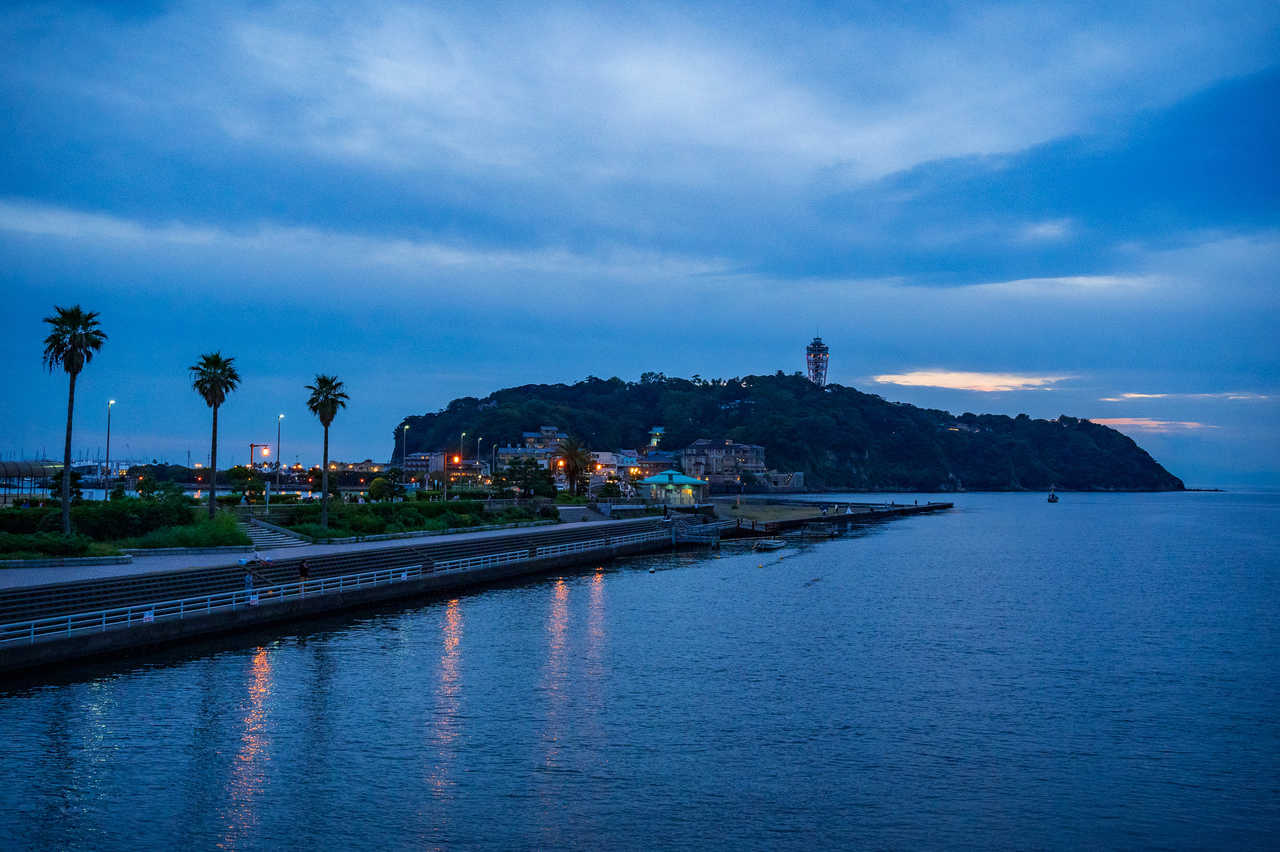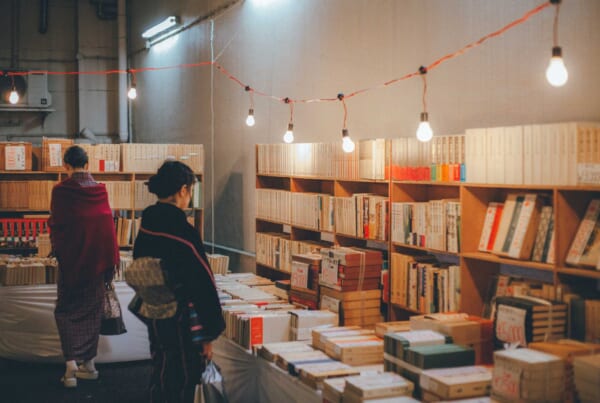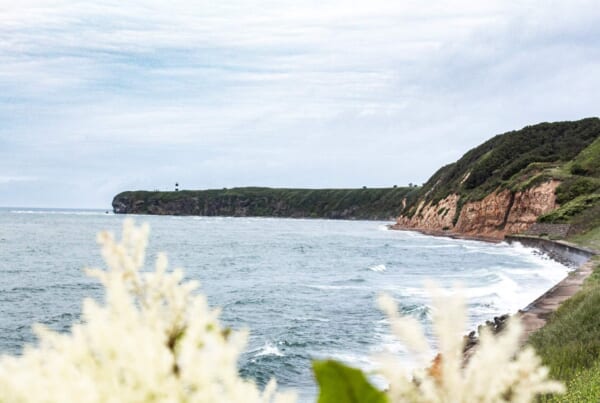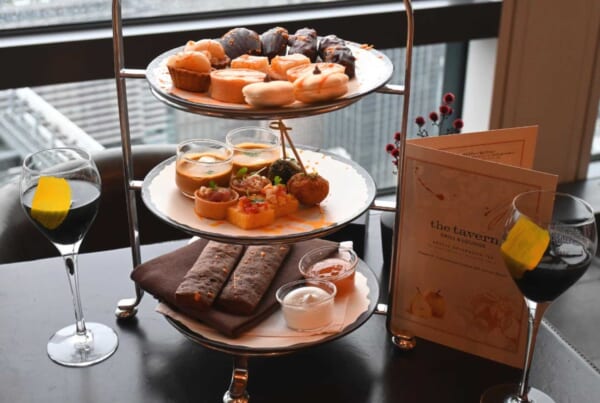If 2020 has left you feeling like you’ve had an eight-month hangover, do your head, heart, and soul a favor and take a break from it. For those living in, near, or just visiting Tokyo, your getaway is just over an hour away on the little island of Enoshima in Sagami Bay.
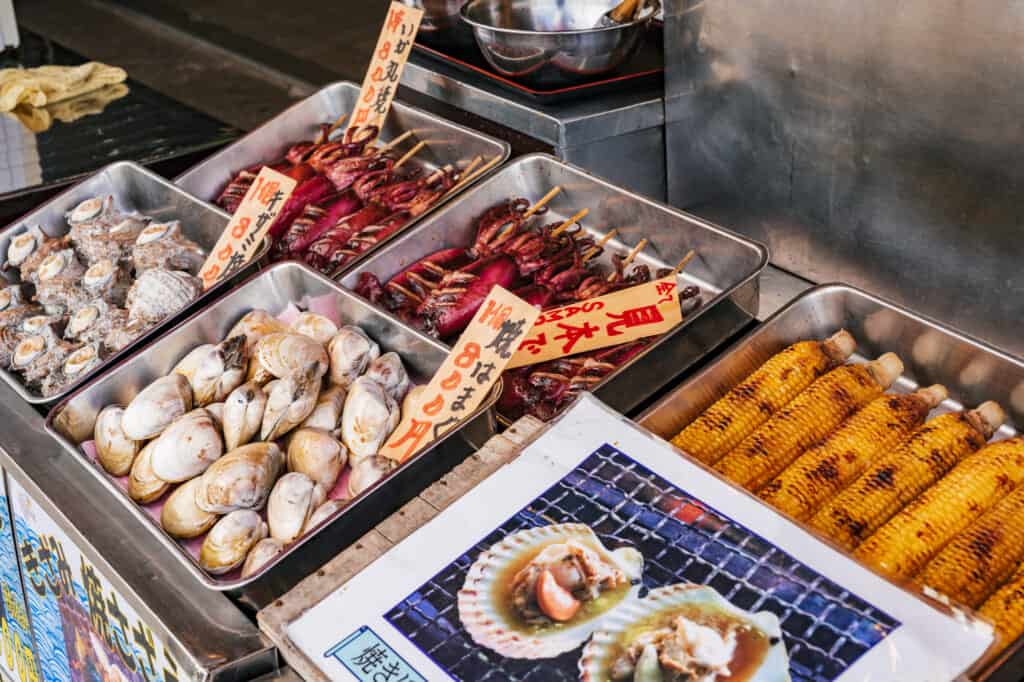
When summer comes to an end, the crowds of city-dwellers who flock to the local beaches evaporate, leaving behind the quaint charms of this compact local island and its sights. If you can take a midweek break, even better — the uncrowded streets and attractions can be enjoyed at such a leisurely pace you might forget you’re in a resort town located in the most populated metropolitan area in the world.
Here’s our recommendation for a perfect two-day itinerary on one of the loveliest, most accessible island getaways close to Tokyo.
Day One on Enoshima Island: Legends, Lights, and Luxury
Public transportation is an easy way to get to Enoshima, with no less than three train lines with stations within walking distance from the island. If you come by Enoden (Enoshima Electric Rail) or the Shonan Monorail, you’ll be a bit farther from the island than if you come by Odakyu Romance Car. However, the walk from these stations is a pleasant one, especially through Subana Street, a shopping street that might give you flashbacks to your last trip to Waikiki. Yes, the vibe of Subana Street is decidedly Hawaiian, a theme which overflows into the atmosphere of the Enoshima area as a whole. So go holo holo (wander) Subana Street looking for some ono grindz (delicious food), and you won’t be disappointed.
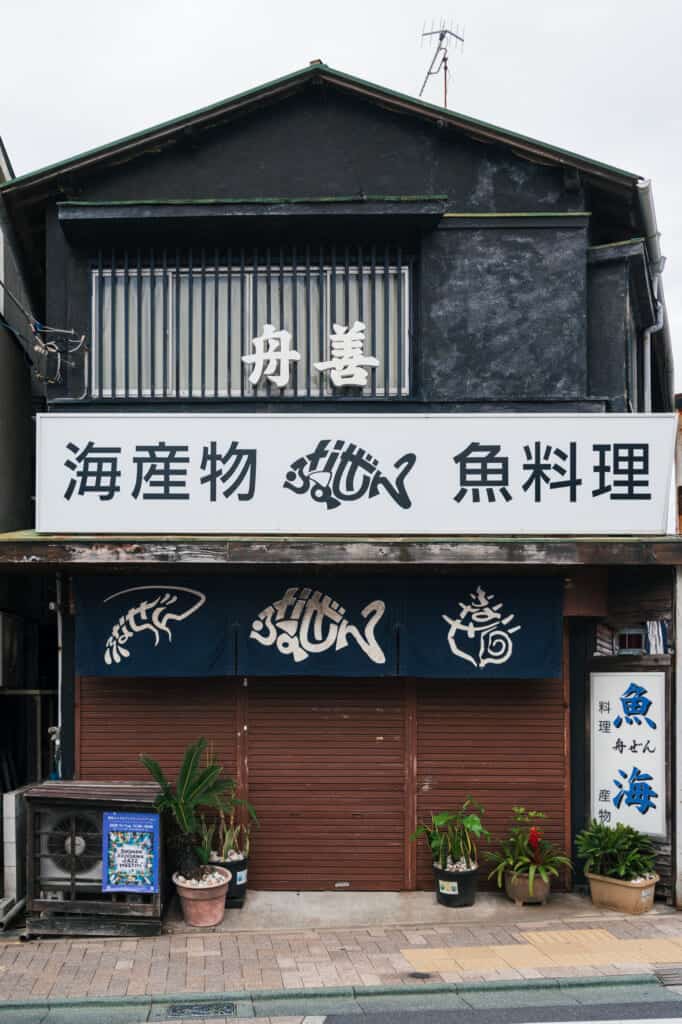
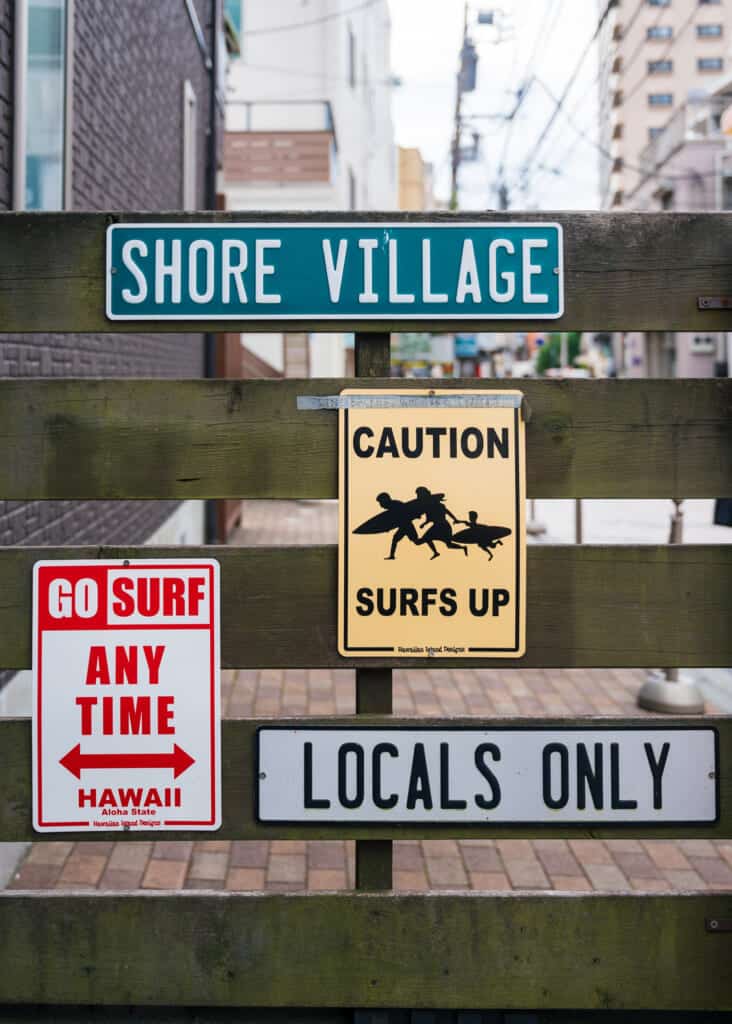
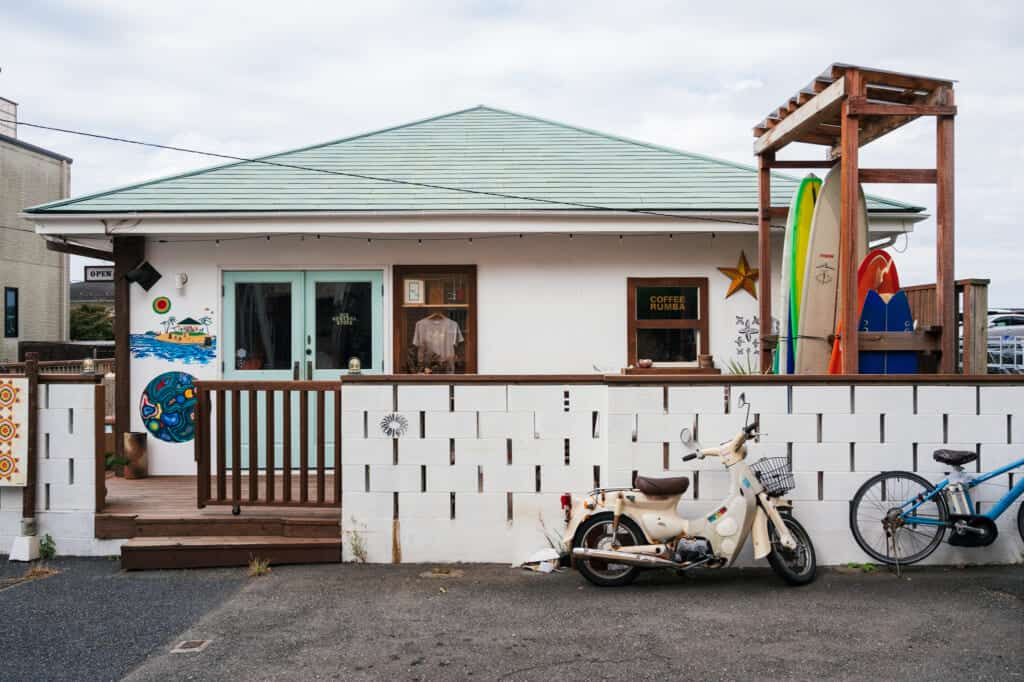
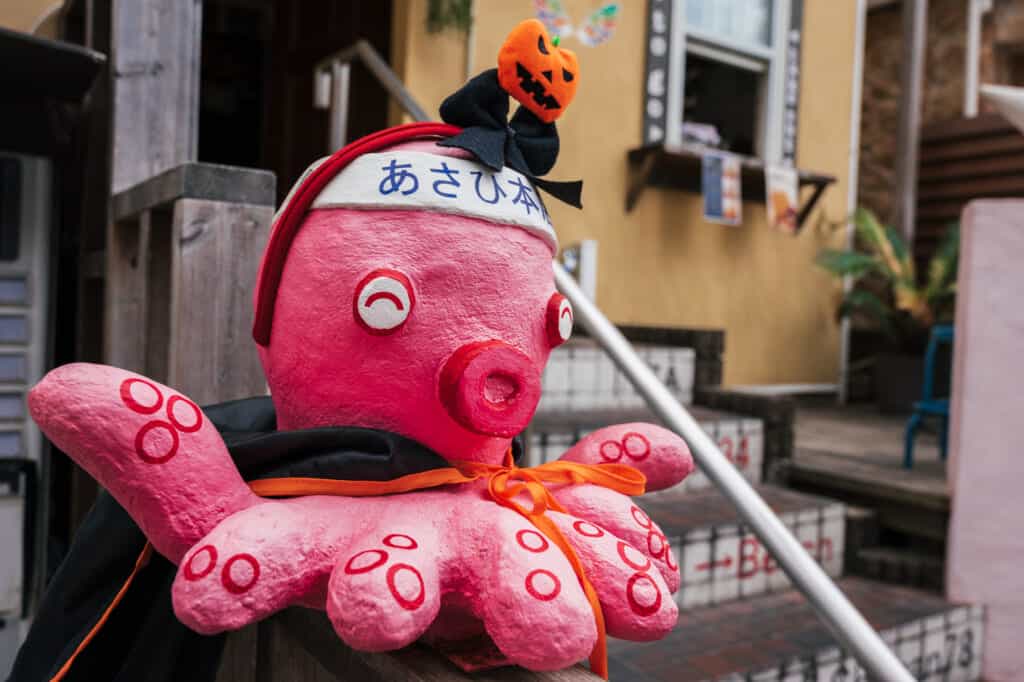
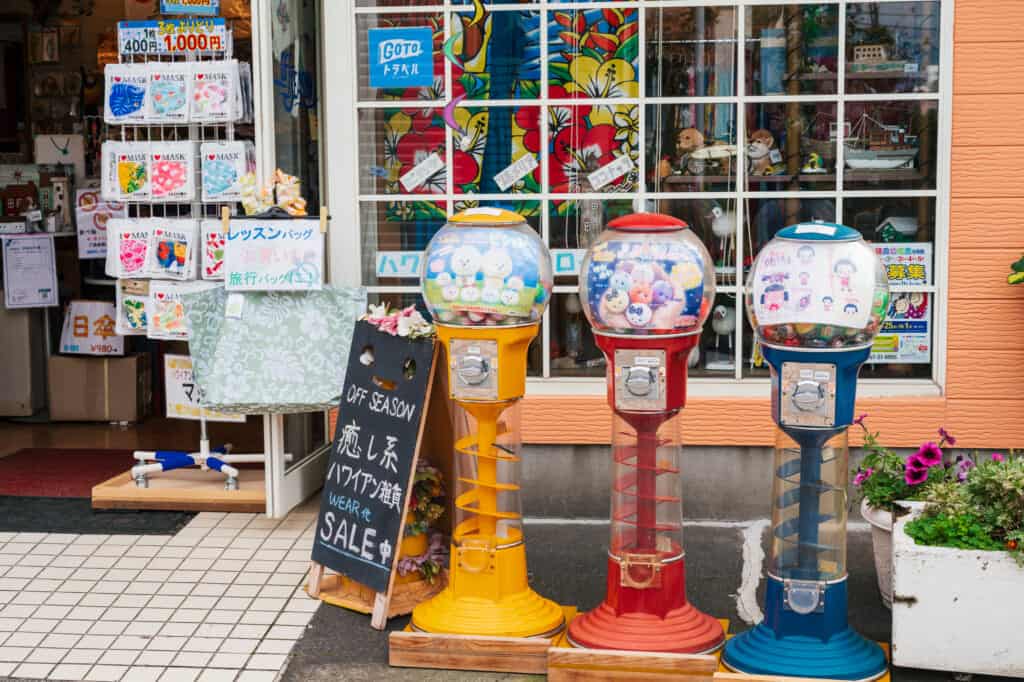
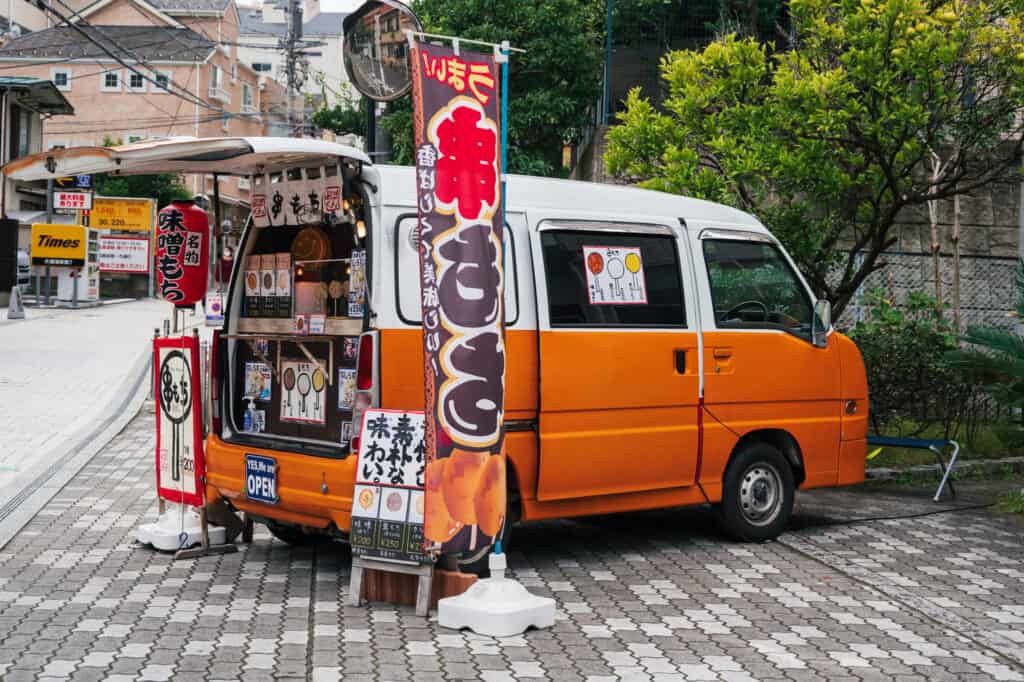

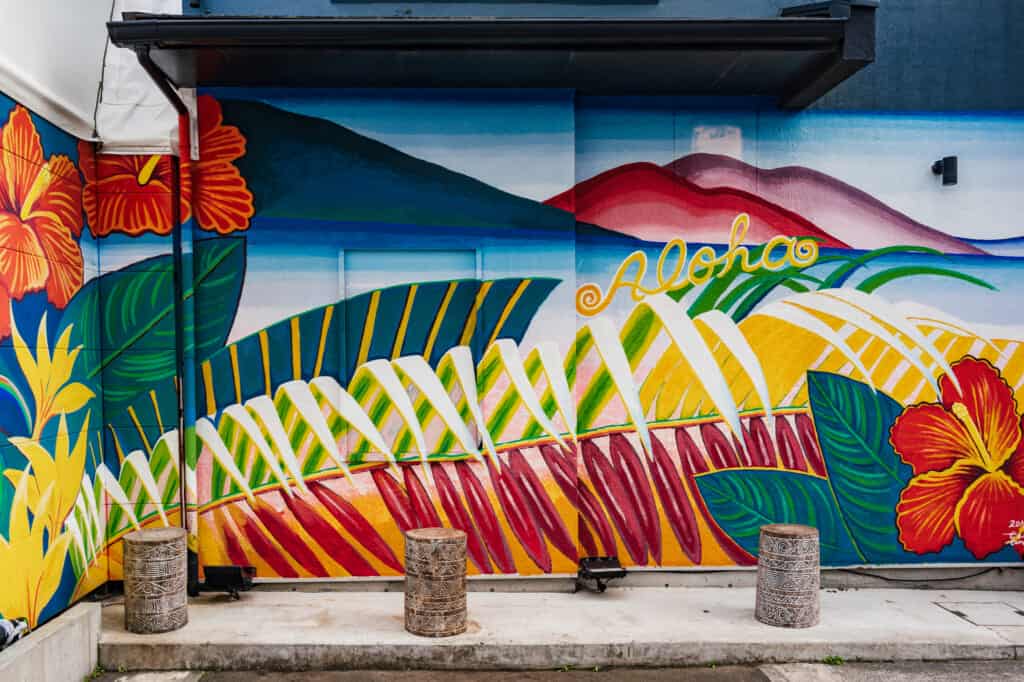
Fujisawa City Tourist Center
At the end of Subana Street, use the underpass to get to the other side of the major street between you and the island. But don’t head to the island just yet. Take a right toward Enoshima Katase West Beach and walk a few hundred meters to the Fujisawa City Tourist Center. If you “Like” the Discover Fujisawa Facebook page, show the staff and they’ll give you a special gift just for visiting Enoshima!
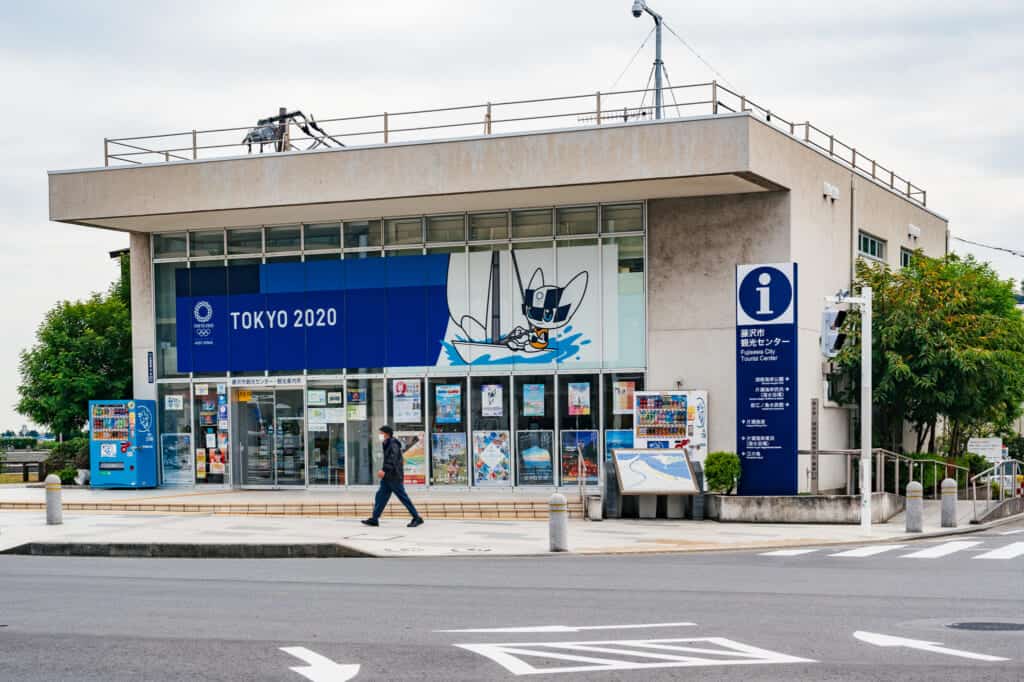
While you’re here, purchase the one-day Enopass, which gives you free admission to Enoshima Iwaya Caves, Enoshima Sea Candle, Enoshima Samuel Cocking Garden, and use of the various “Escar” escalators around the island for the day.
Enoshima Island
Now you can cross the bridge on your way to the island. On your way, pass between the Enoshima Shrine Memorial Dragon Lanterns, created as a homage to the legend of Gozuryu, the five-headed dragon who once terrorized and then protected the area around Enoshima. It seems Gozuryu fell head over heels with the goddess Benzaiten, who convinced him to change his wicked ways in exchange for her love. You’ll see images of Gozuryu if you pay careful attention as you walk around the island.
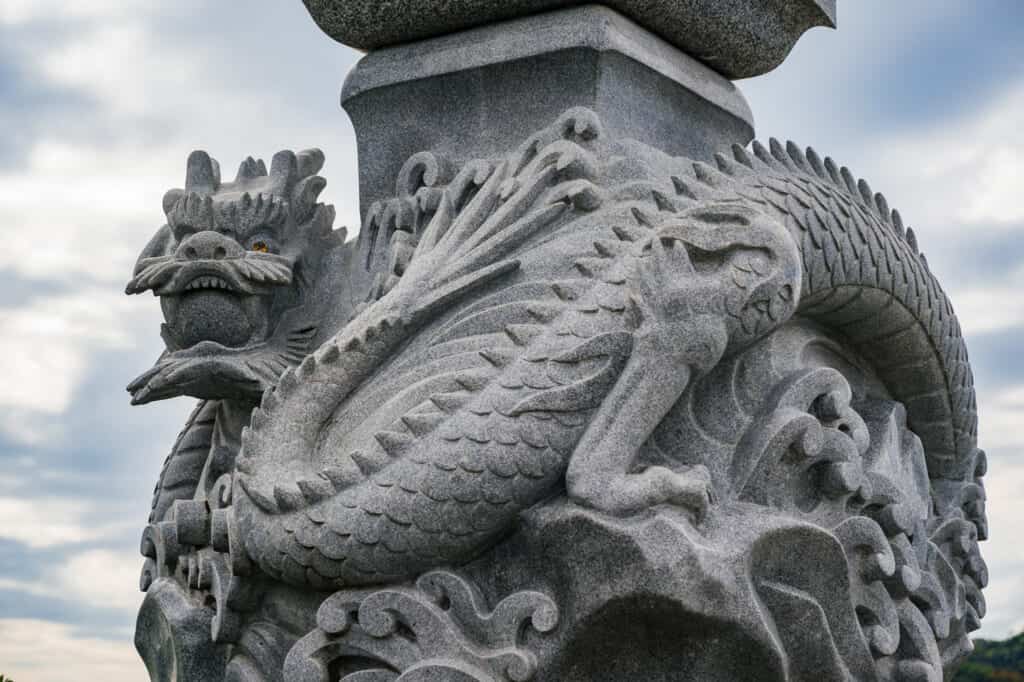
The large bronze “Seido no Torii” gate you’ll see as you arrive on the island marks the start of Benzaiten Nakamise Street, the central shopping street of the island that has thrived in various forms since the Edo era. Some of the shops on the street have been in business for decades while others are relatively new. You should make time to do some browsing during your stay on Enoshima.
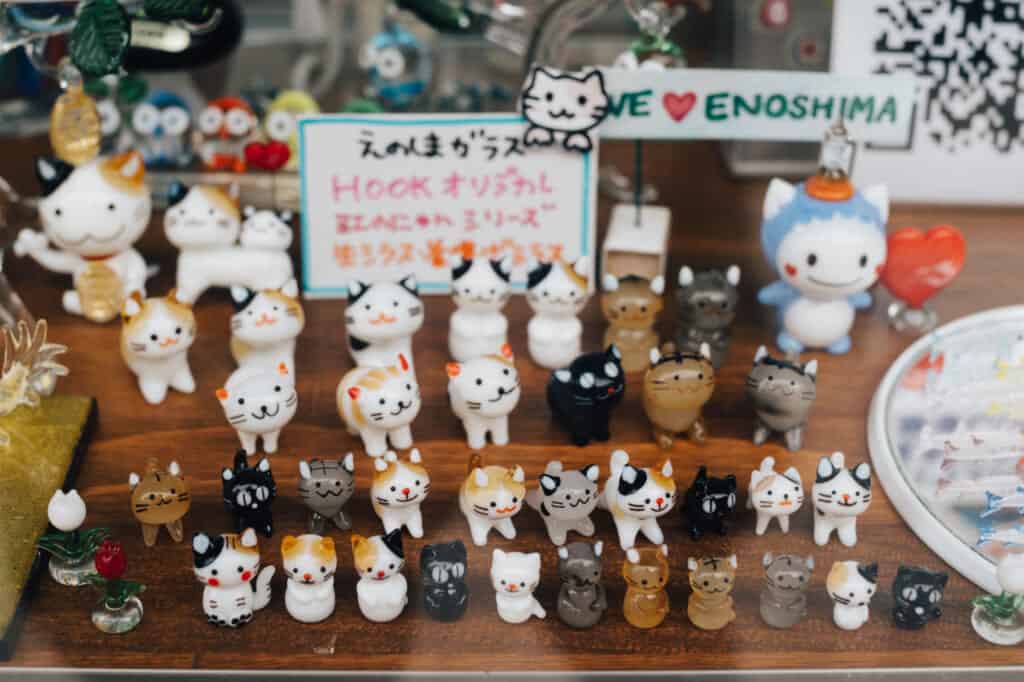
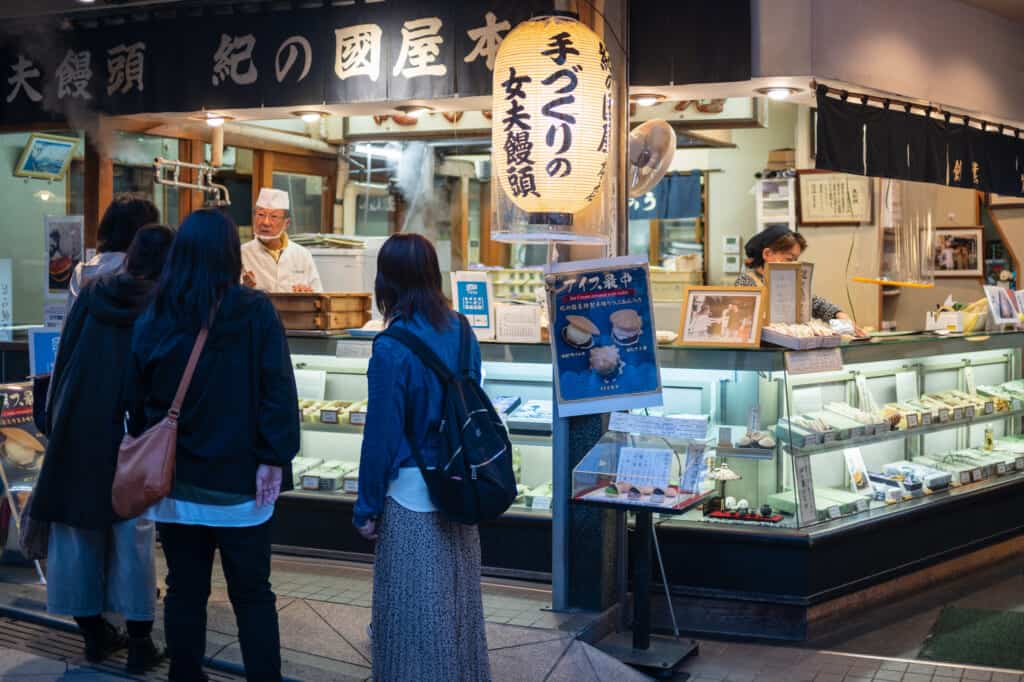
Before heading up the street, make a left down the main street toward the harbor and drop your luggage off at the Enoshima Hotel, where you’ll be spending the night. If your room isn’t ready, the staff will be glad to secure your bags until you are ready to check in later.
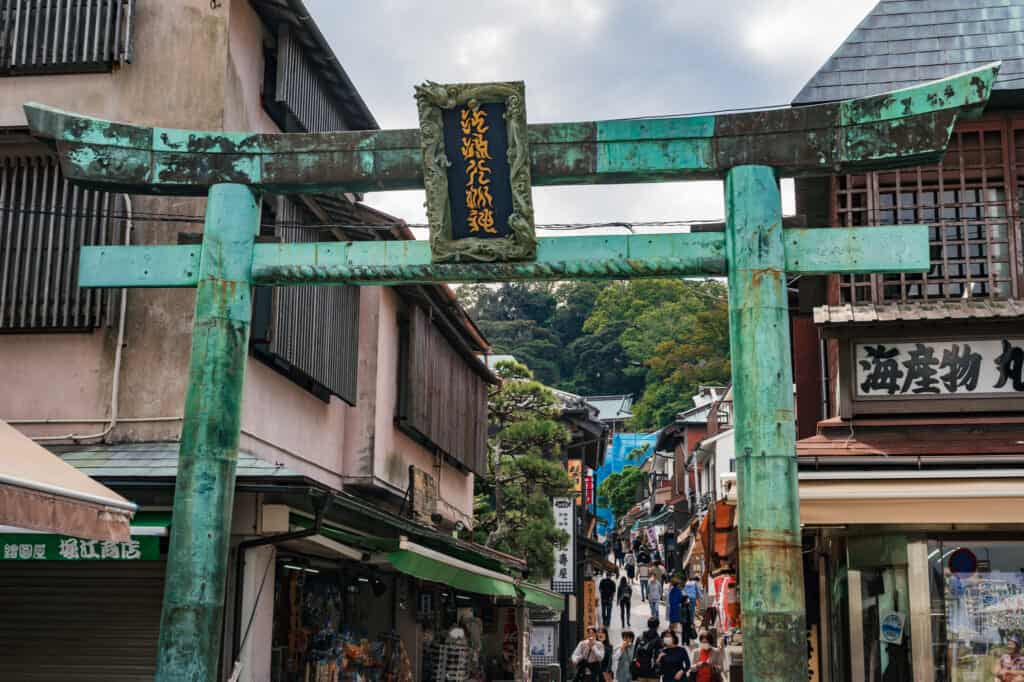
Enoshima “Escar” Escalators
At this point, you’ll want to become familiar with the locations of the various escalators on the island that can get you back to the top of the hill to the garden and Sea Candle with minimal effort (the escalators only go up the hill, but getting back down is much easier anyway). You’ll find the first one at the top of Nakamise Street to the left of the red torii gate. The cost of riding the escalators is included in your Enopass, so just show your pass and ride for free. Some of you may scoff at the idea of using escalators on an outdoor hike, but you are probably the same people who scoff at the thought of heated toilet seats. I offer that both the escalators and the toilet seats feel pretty good when you need them, but you are free to do as you wish!
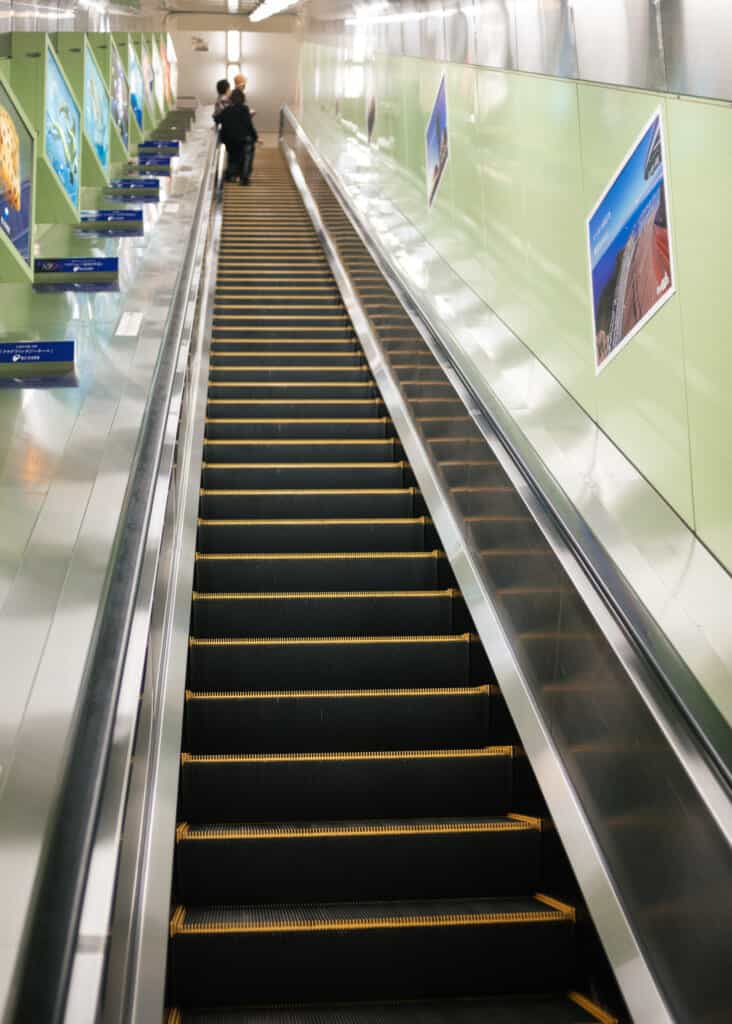
Nakatsumiya Shrine and Enoshima Daishi
At the top of the first escalator, go left on the path and follow the signs to the second Escar escalator, at the top of which is the second of the three Enoshima Shrines, Nakatsumiya. This shrine’s appearance is a little more ornate than that of its two siblings, and for a good reason. Nakatsumiya was a popular pilgrimage destination for famous kabuki actors during the Edo Period, who lavished the shrines with extravagant gifts, like the stone lanterns you’ll find at the entrance. It is also the only one of the shrines painted in brilliant vermillion, perhaps as a nod to the flashy world of kabuki it was so popular with.
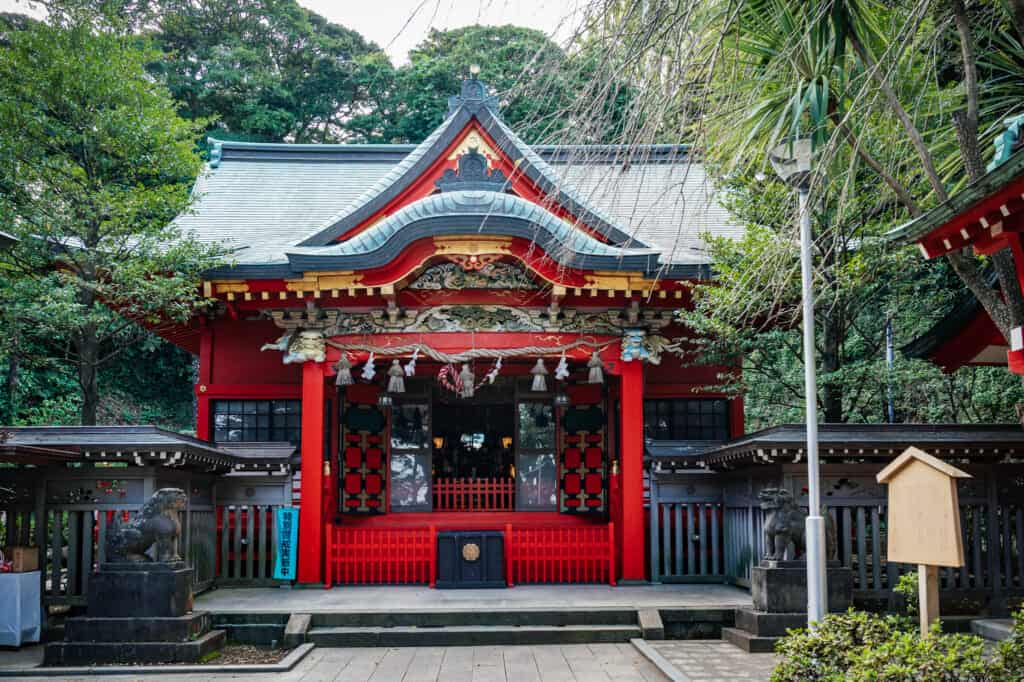
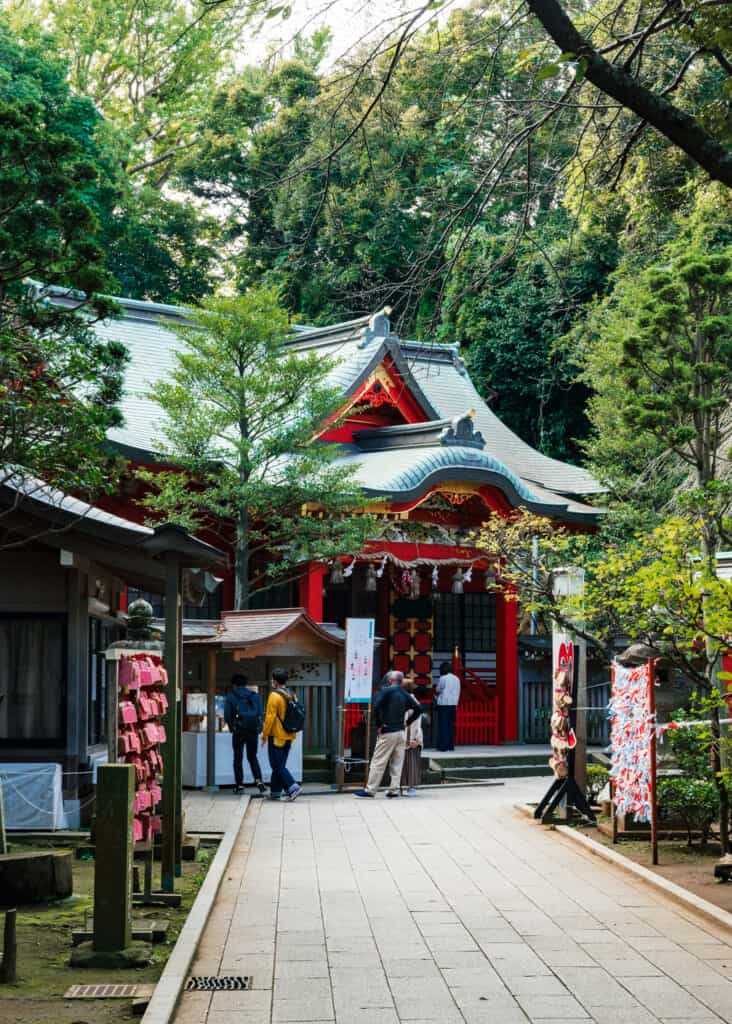
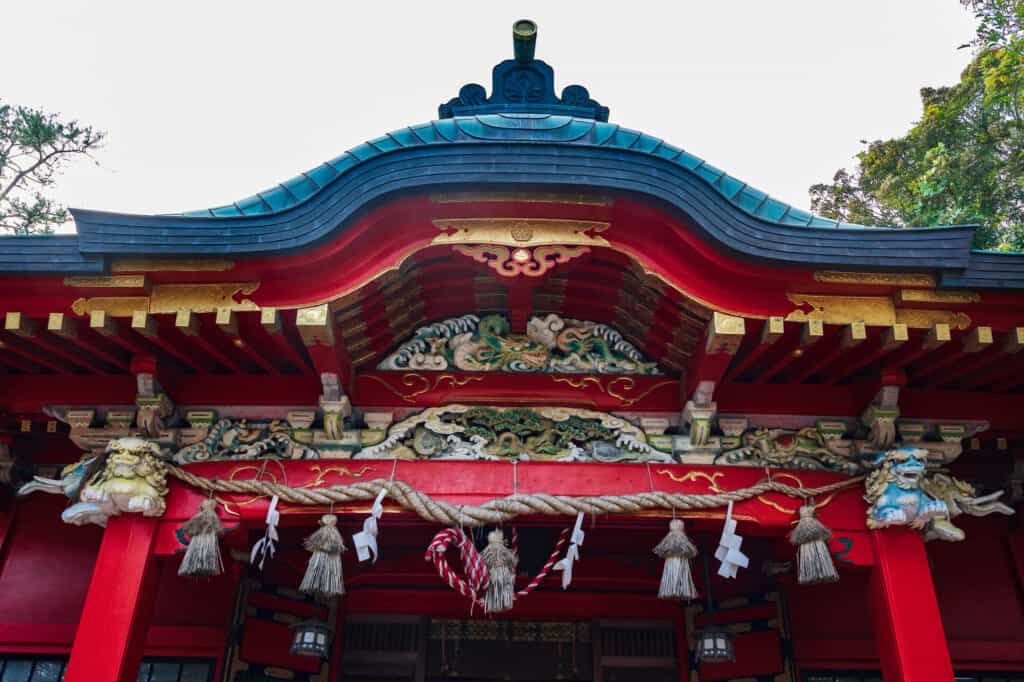
Take the third and final Enoshima Escar escalator and follow the path around to the right, past the entrance to Enoshima Samuel Cocking Garden, eventually coming under the menacing stares of two large red Akafudo guarding a modern-looking round temple. This is Enoshima Daishi, a Buddhist temple established by the Shingon sect in 1993. Feel free to stroll around the temple grounds and peek into the main hall, where you’ll find, among other things, a lovely stained glass window illuminating the interior.
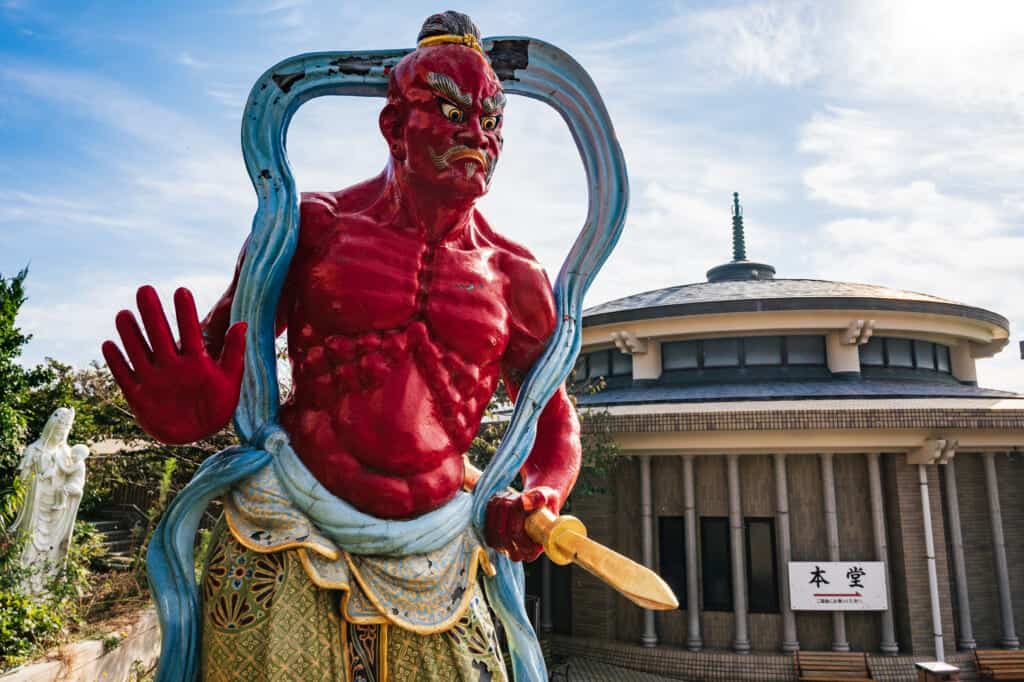
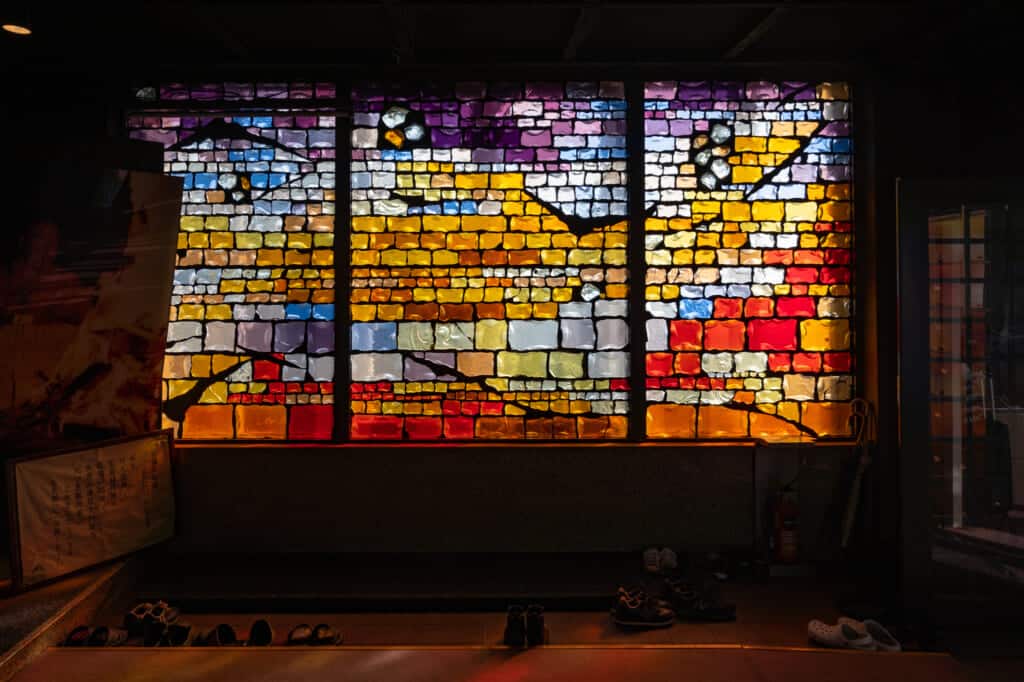
Lunch with a view at Fujimi Tei
By now it’s lunchtime, and you’re probably feeling a little hungry. Your lunch destination today is Fujimi Tei, whose name belies the reason why you’ll be eating here: the view of Mt. Fuji. Follow the road leading east, down the steps of Oiwaya Street and back up another set of stairs, passing in front of the Enoshima Okutsumiya Shrine and down a flight of steps before arriving at Fujimi Tei, identifiable by its Japanese kanji 富士見亭.
Like most restaurants on the island, fresh fish is always on the menu. In the autumn months, the regional specialty shirasu (whitebait), tiny sardines from Sagami Bay, are the local favorite. Whatever you choose, it’s going to be fresh, so treat yourself to a relaxing meal and perhaps, a stunning view of Mt. Fuji across the bay.
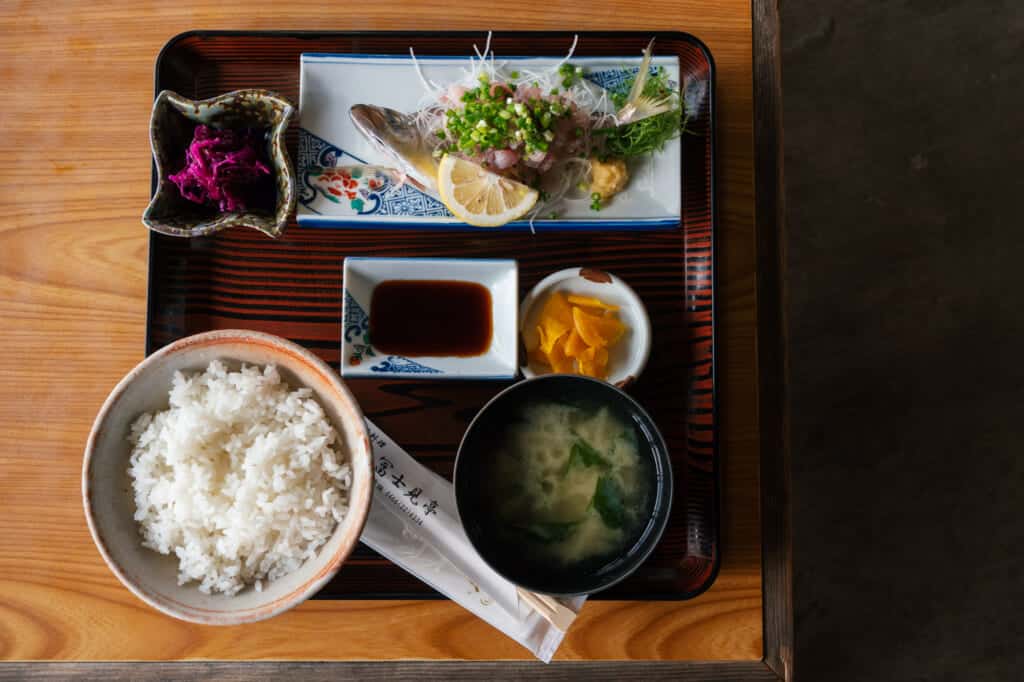
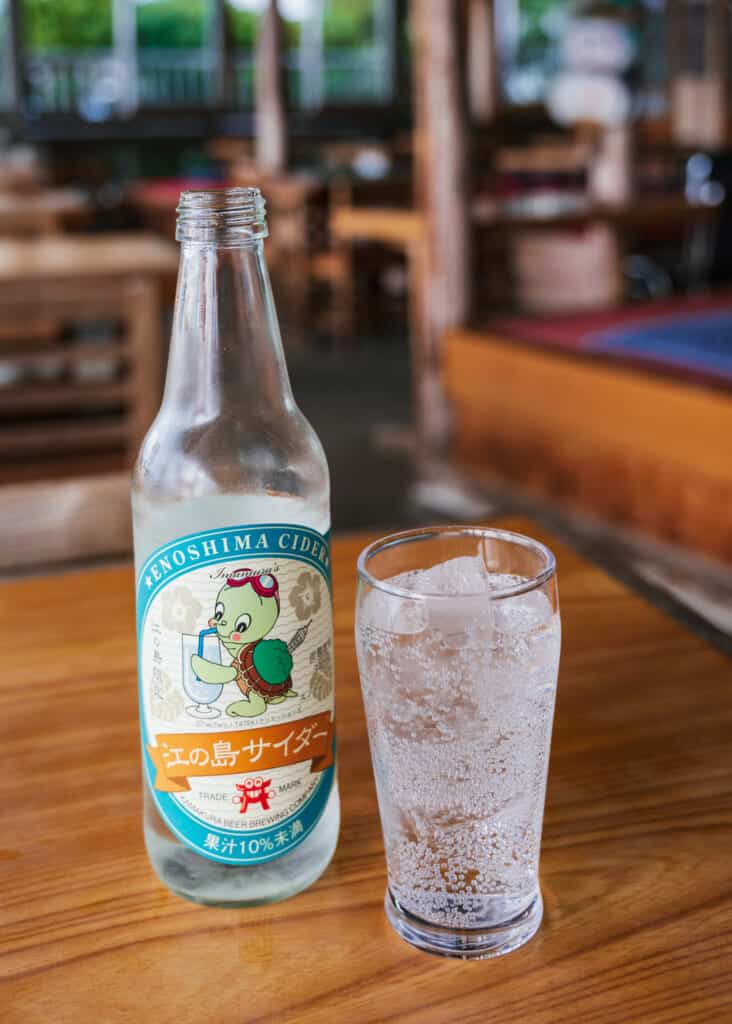
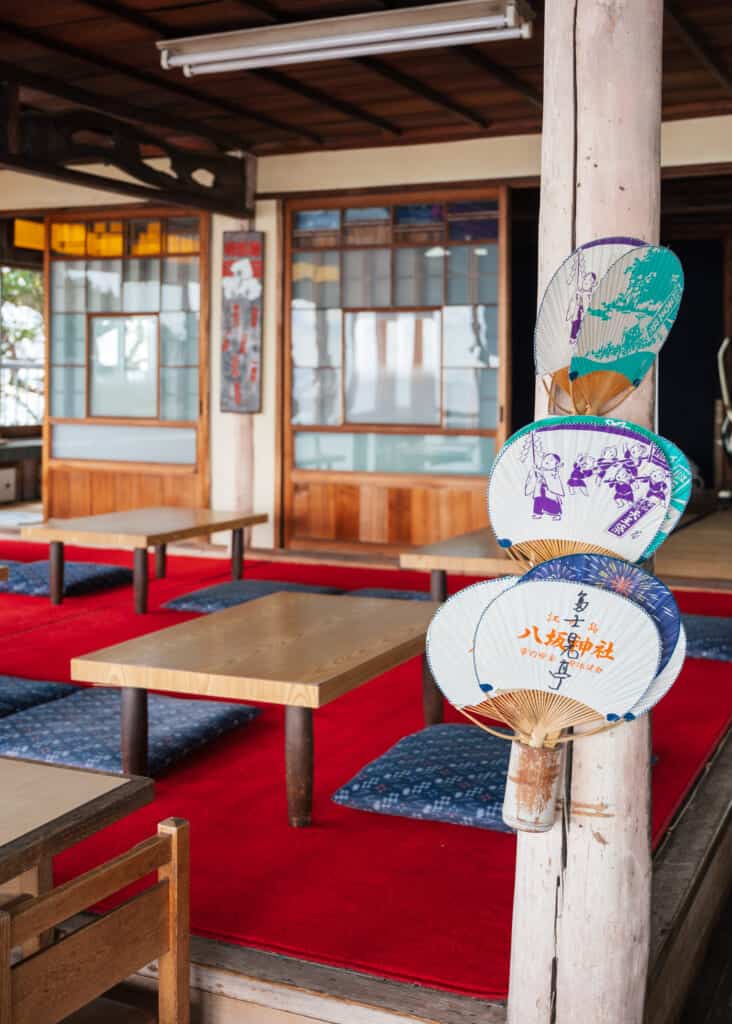
Except when there is no view. Mt. Fuji’s cruel irony is that it is most easily seen when the air is cold, so on mild autumn days that are perfect for strolling around in a light jacket, the shy mountain may hide in a veil of clouds. However, the restaurant is named Fujimi Tei, and if they promise you a view of Mt. Fuji, you’re going to get it, one way or another.
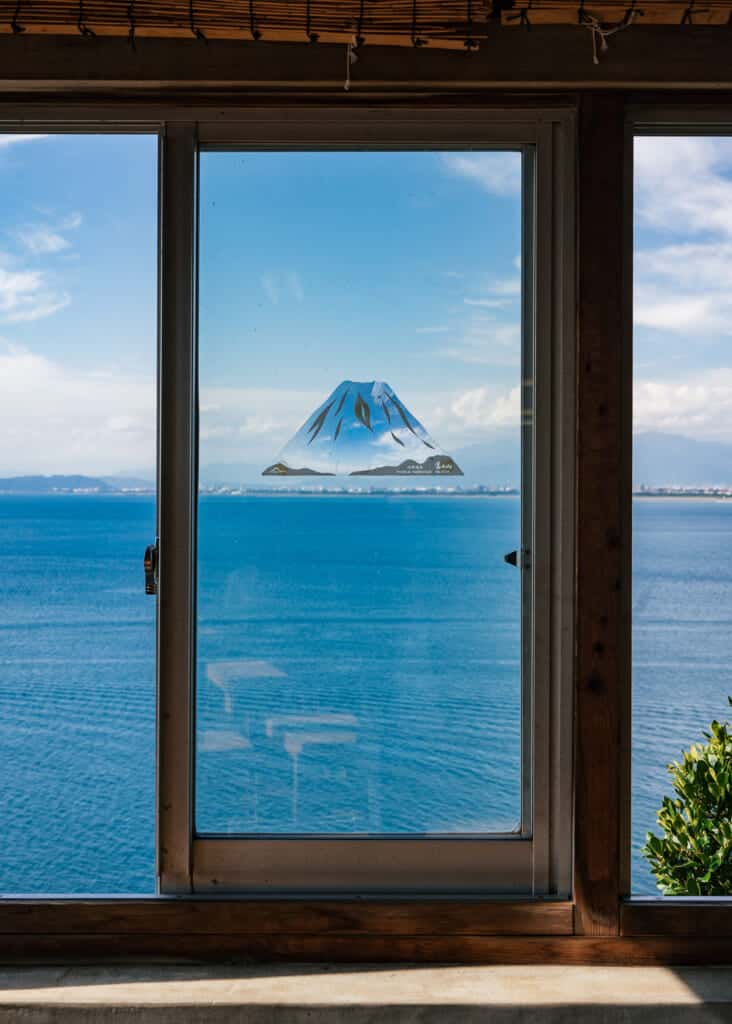
Enoshima Okutsumiya Shrine
After satisfying your hunger, backtrack a bit up the stairs to Enoshima Okutsumiya Shrine. To digress even further, when one speaks of the Enoshima Shrine, they are talking about three different shrines spread across the island. Okutsumiya Shrine, the third shrine, was built as the goddess Benzaiten’s home during the warm months when typhoons would sometimes flood her home inEnoshima Iwaya Caves. The shrine may appear unremarkable, but look up; painted on the ceiling is “Happo nirami no kame” (Turtle staring in all directions) by the Edo era artist Sakai Hoitsu. There are other images of turtles in the area, so have fun discovering them all. To the right of Okutsumiya is Wadatsuminomiya, a shrine built for the dragon Gozuryu, whose image stares down at you from above the entrance.
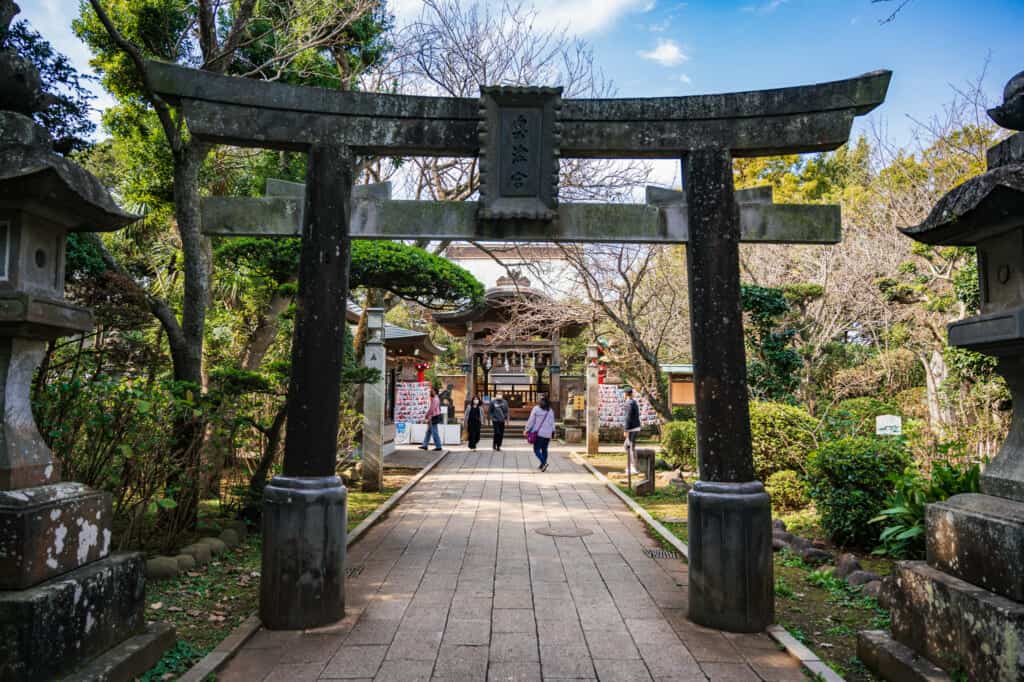
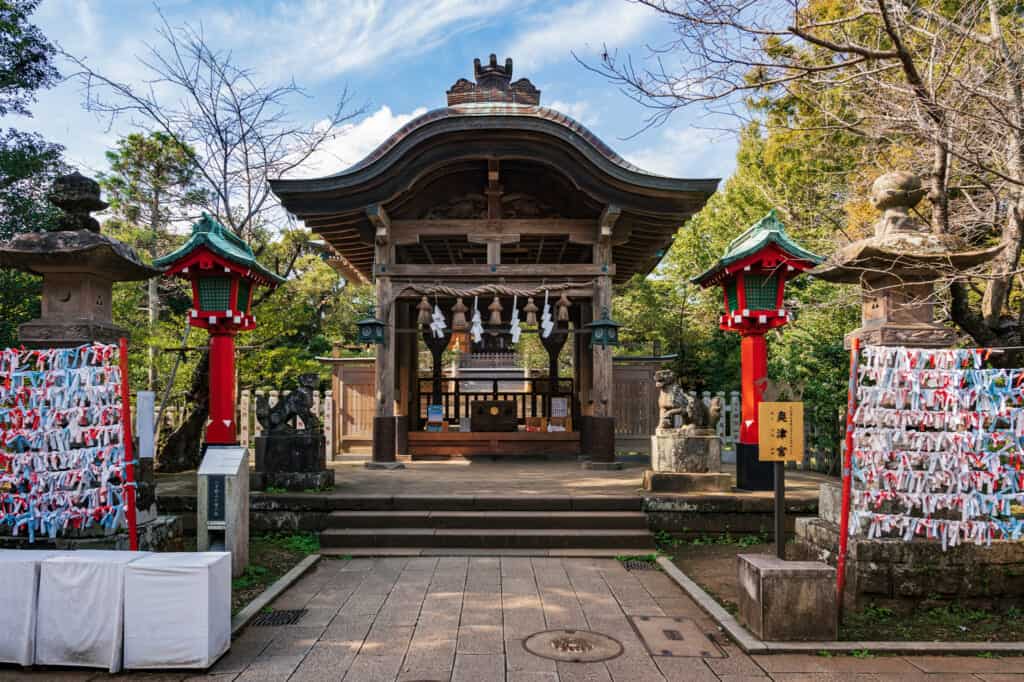
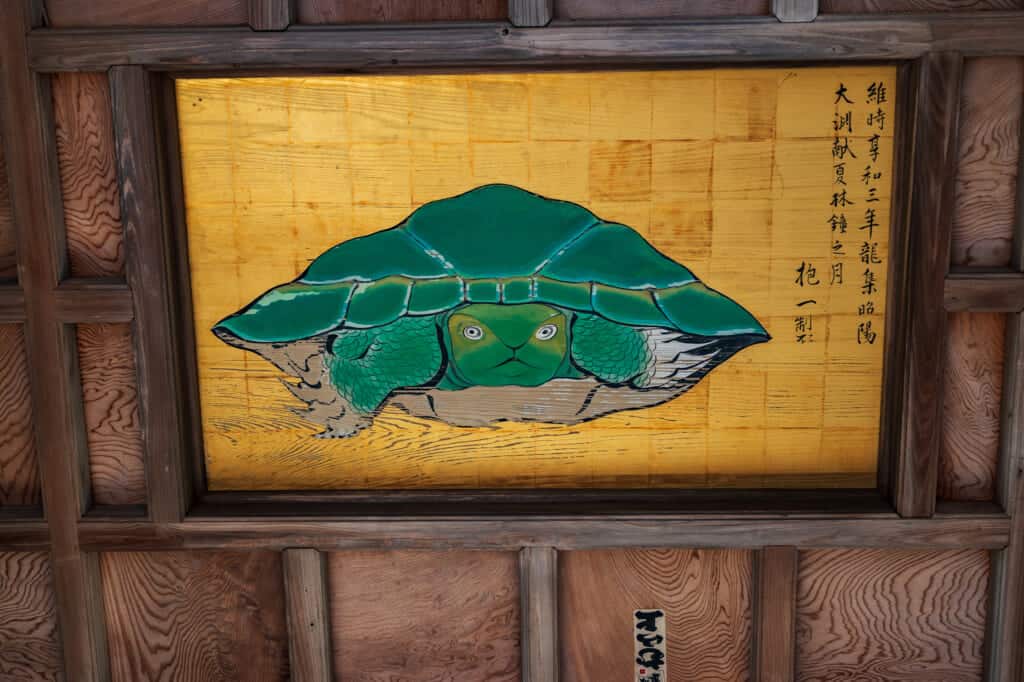
Chigogafuchi and Enoshima Iwaya Caves
Head back down the stairs and past Fujimi Tei to the Chigogafuchi Abyss. Before you waste your time searching about, the abyss refers to the deep undersea waters at this location and are not visible. Now that we have that cleared up, Chigogafuchi is one of the top scenic spots in Kanagawa Prefecture for viewing Mt. Fuji, enjoying the sunset, or watching the fishermen reel in their catch. It is also the landing point for the Benten-maru ferry, which brings you to this far side of the island from the Enoshima Benten-bashi (bridge) for 400 yen (service depend on the weather conditions).
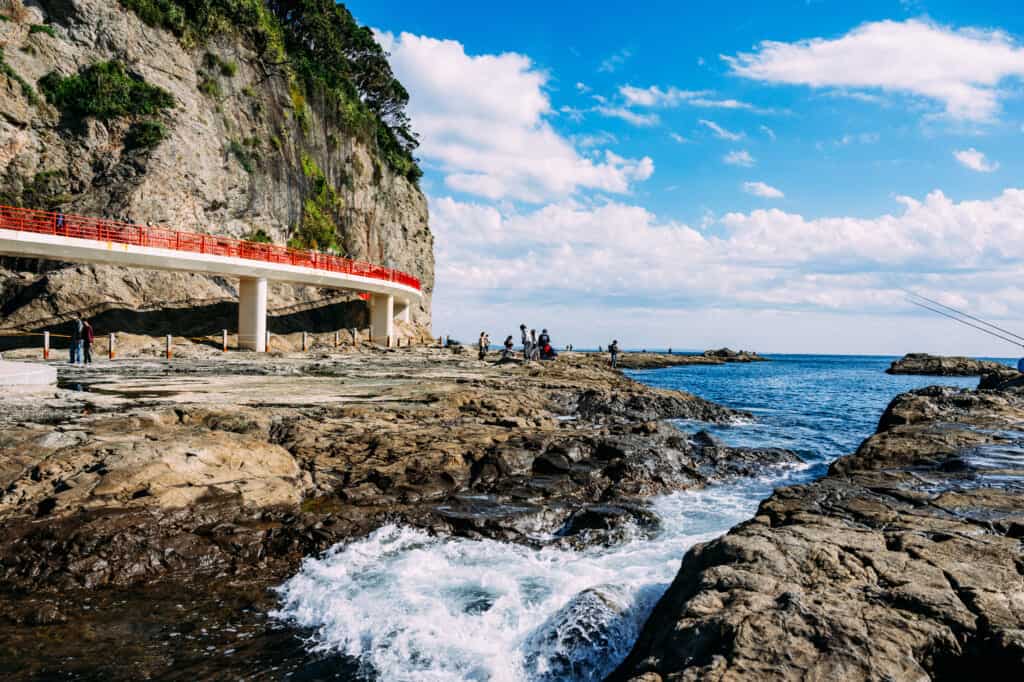
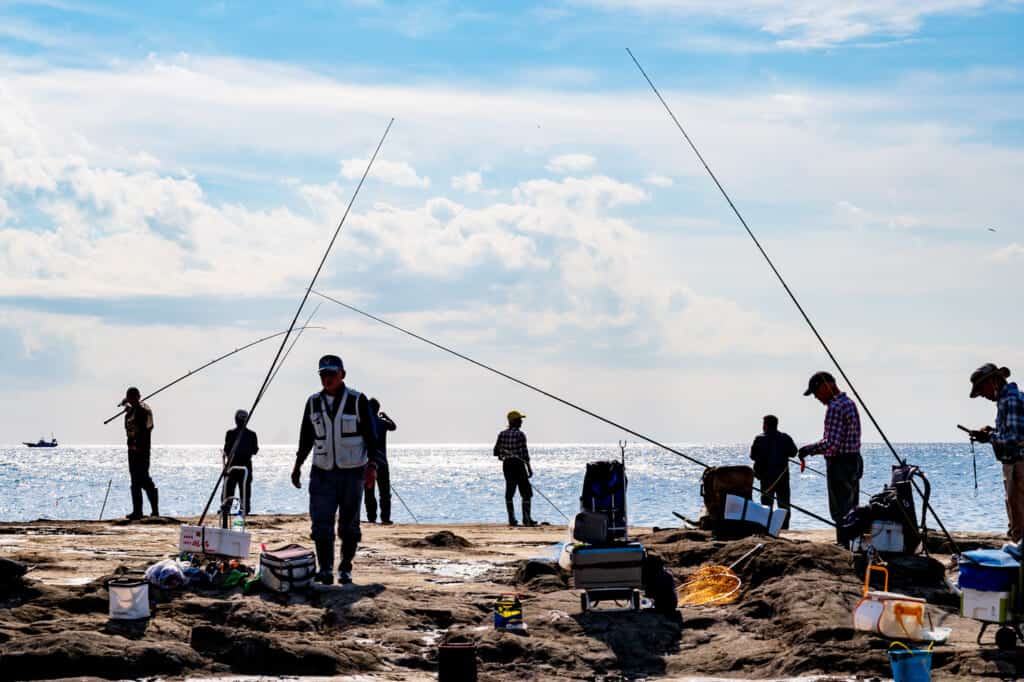
After enjoying the view, continue along the path until you reach Enoshima Iwaya Caves. Put on your mask, get your temperature taken, and slather on some hand sanitizer and get ready to enter the caves. All that’s left is to flash your Enopass to the attendant, and you’re in.
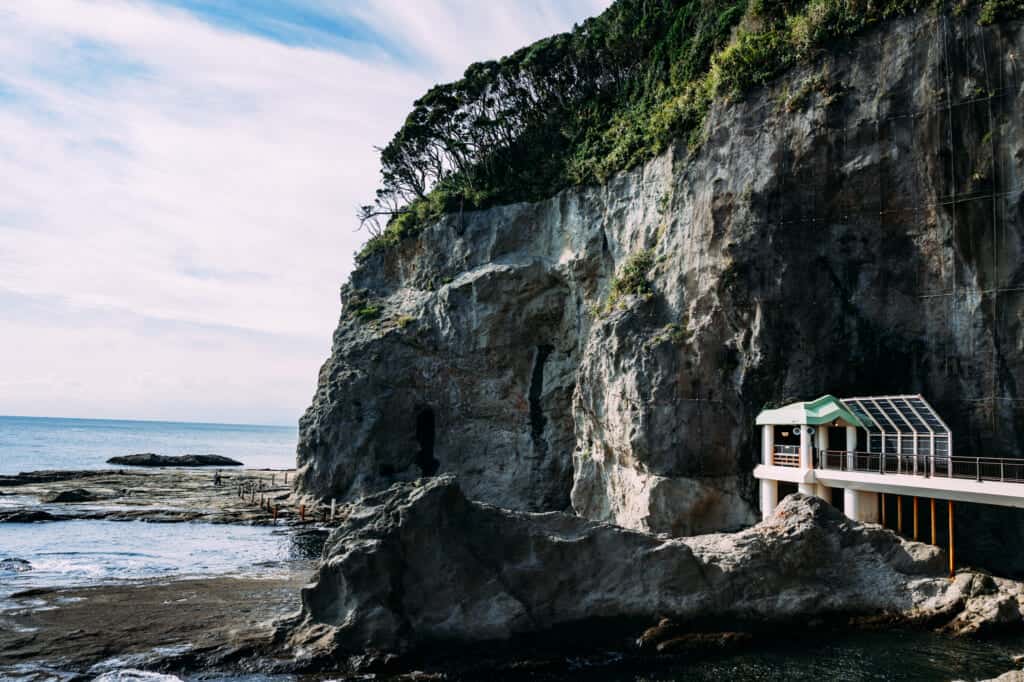
As you enter the caves, keep in mind that it wasn’t always so simple for the general public to see inside them. The caves were considered part of a religious pilgrimage, and as it is with most pilgrimages, the more difficult it was to complete it, the more beneficial it was considered for your soul. Even for those with no spiritual motive, the caves are a curiosity difficult to resist.
The first cave is deeper and longer and lined with stone images related to its historic spiritual roots. At the end of the cave is a hole said to be connected to an ice cave near the foot of Mt. Fuji. You might feel a blast of cold air coming from the hole, perhaps evidence of its ultimate destination.
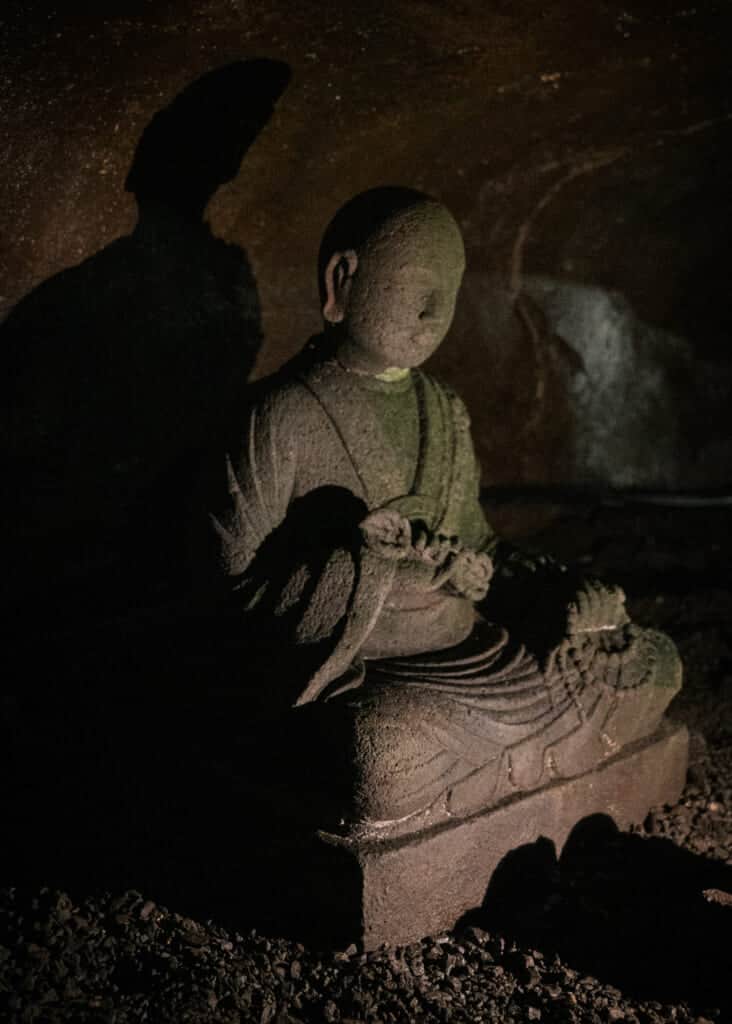
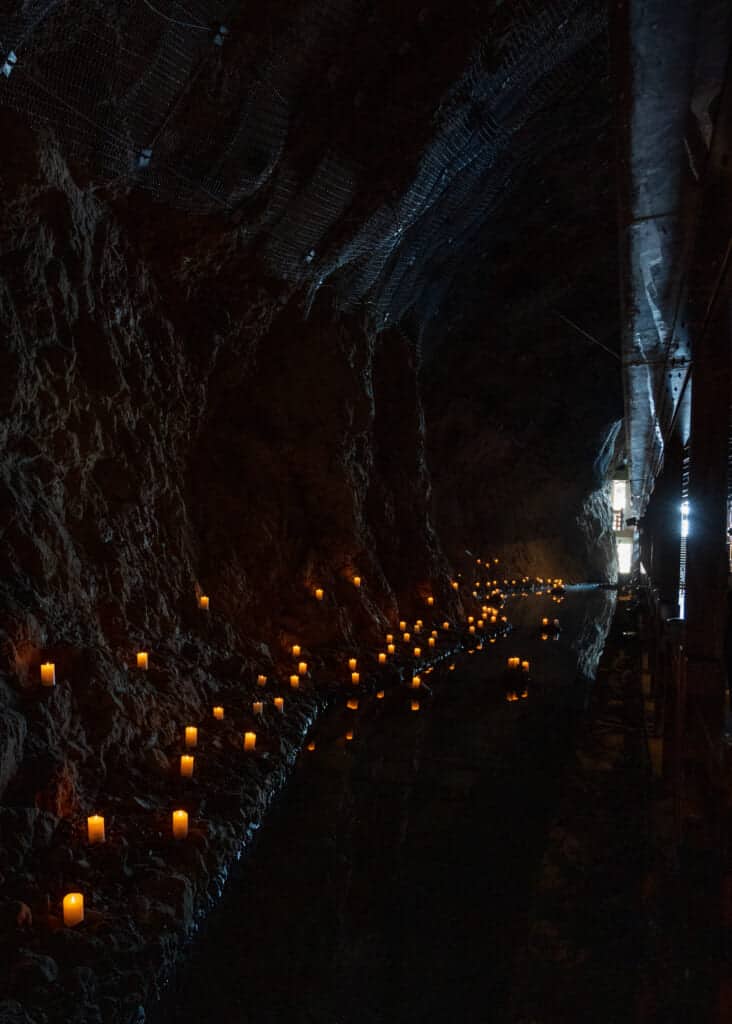
The second cave is shorter and contains yet another statue of a dragon, likely memorializing Gozuryu. He’s kind of a big deal around these parts.
Be aware that if you are tall, and by that, I mean taller than an elf, you’ll need to watch your head in many places in the caves. There are warning signs posted all over the caves to guide you, but if you are unusually tall, you might come out of the cave feeling a bit like Quasimodo.
Take A Break At Enomaru or Enoshima Cafe
By now, your feet may be a bit tired from the long walk around the island, so you have a few options to take a rest. The Shima Cafe Enomaru is near Enoshima Daishi, the temple you visited earlier. It is a cafe/gallery in a renovated house that is over 90-years-old. Enjoy a refreshing warm or cold beverage immersed in an atmosphere of old Japan. You can go directly to the Enoshima Samuel Cocking Garden where you’ll find some options for a quick snack and drinks inside. Enjoy the colorful displays of seasonal flowers that are changed by gardeners throughout the year.
Because I was visiting during a special event, however, I wanted to come back around dusk. Instead, I headed down the hill and back through Nakamise Street, where I found the spacious Enoshima Cafe waiting inside the Enoshima Island Spa at the bottom of the hill. I rested for a while in a comfortable chair while enjoying a coffee-flavored soft serve ice cream cone.
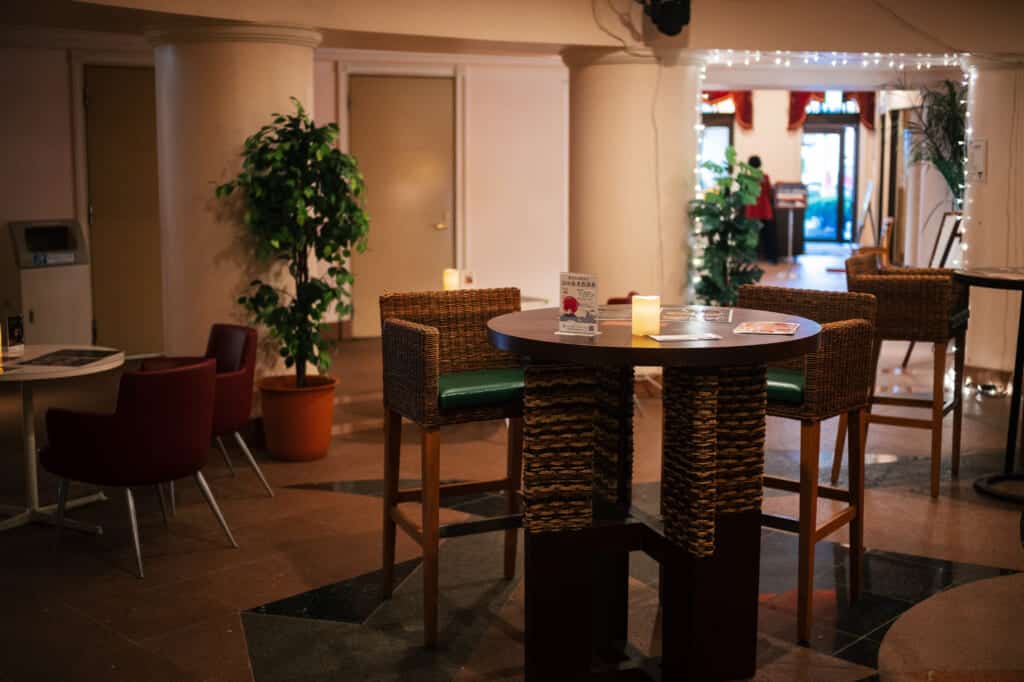
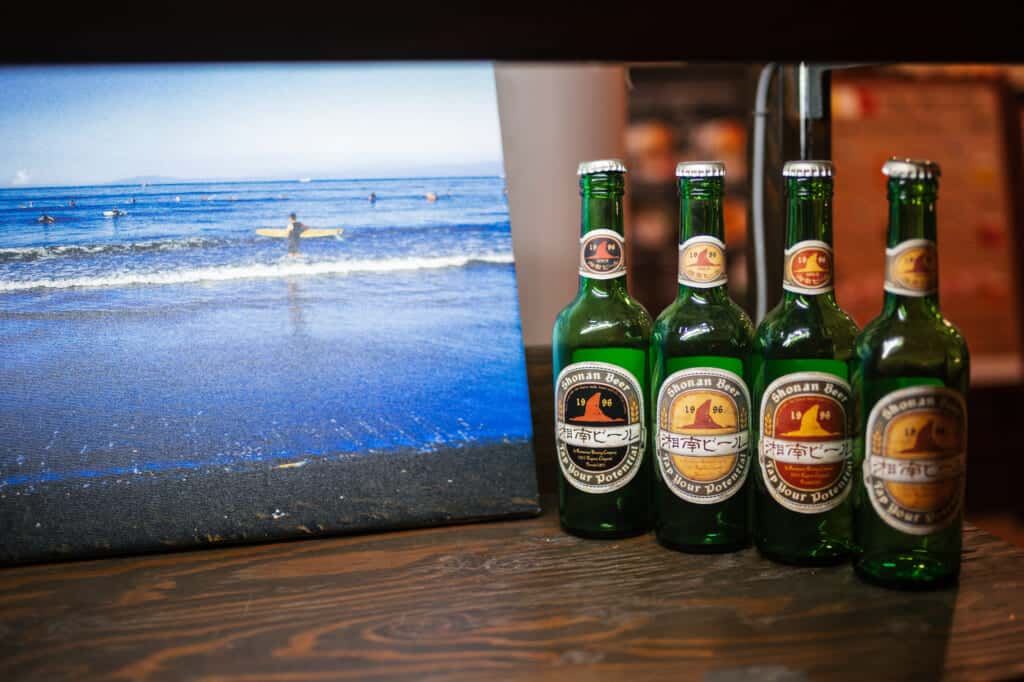
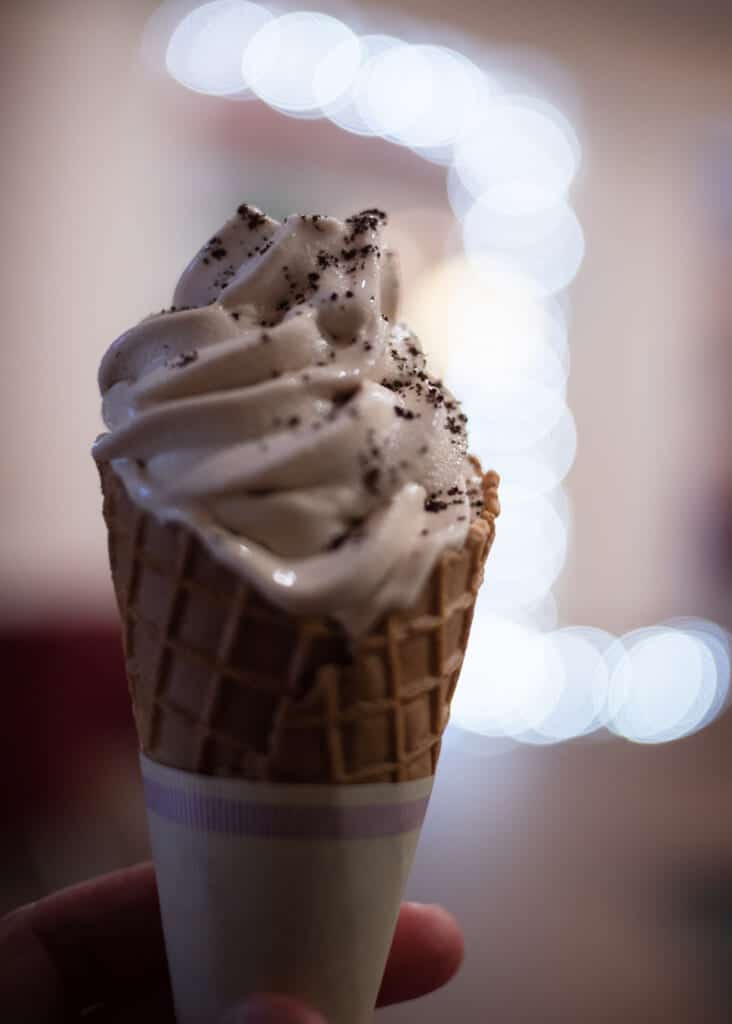
Enoshima Island Shonan Candle Festival
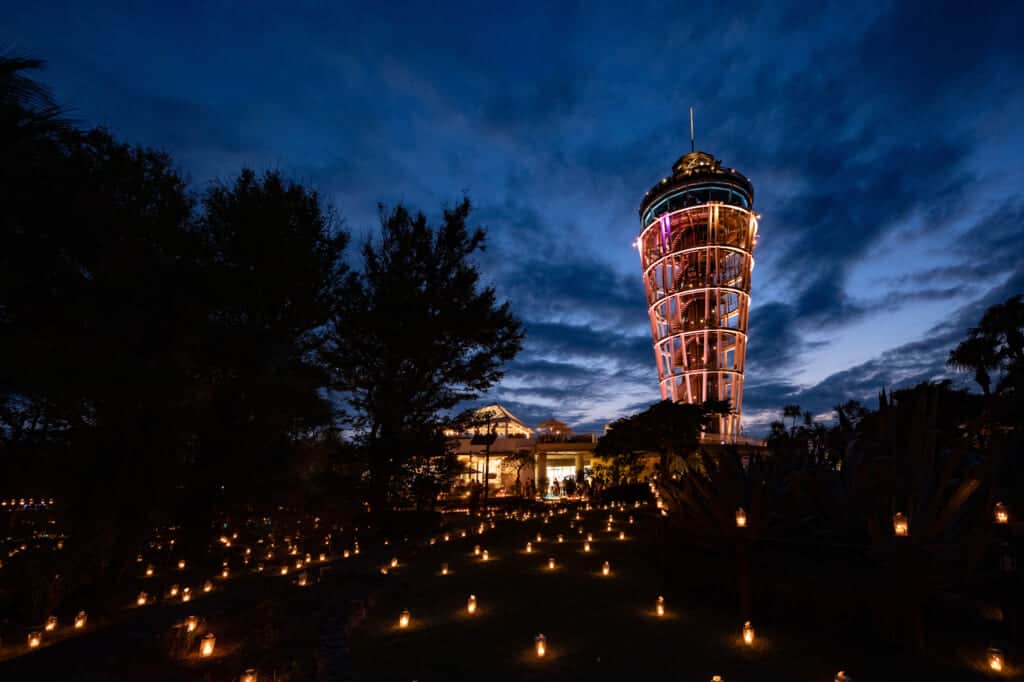
The Shonan Candle Festival is an annual event in the garden where 10,000 candles are lit nightly in beautiful displays around the garden’s different areas. The event is so large that an army of community volunteers is recruited each day to light and extinguish all of the display’s candles. As dusk settles over Sagami Bay, the Enoshima Sea Candle lights up alongside these thousands of real candles, creating a spectacle that is honestly impossible to capture in words and photos fully.
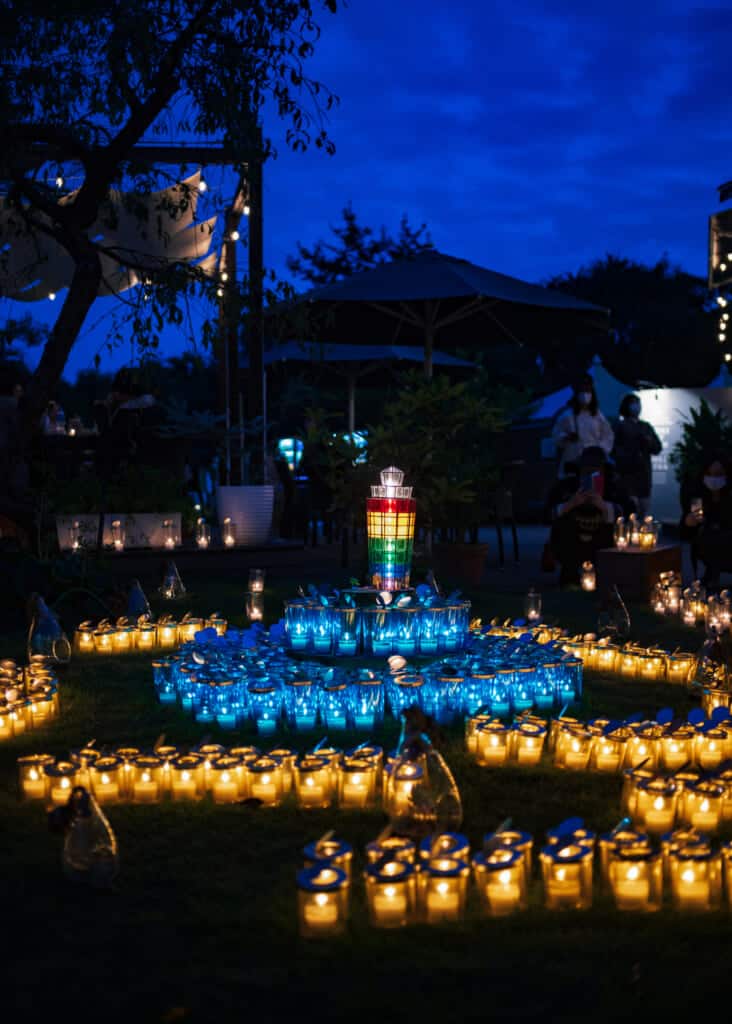
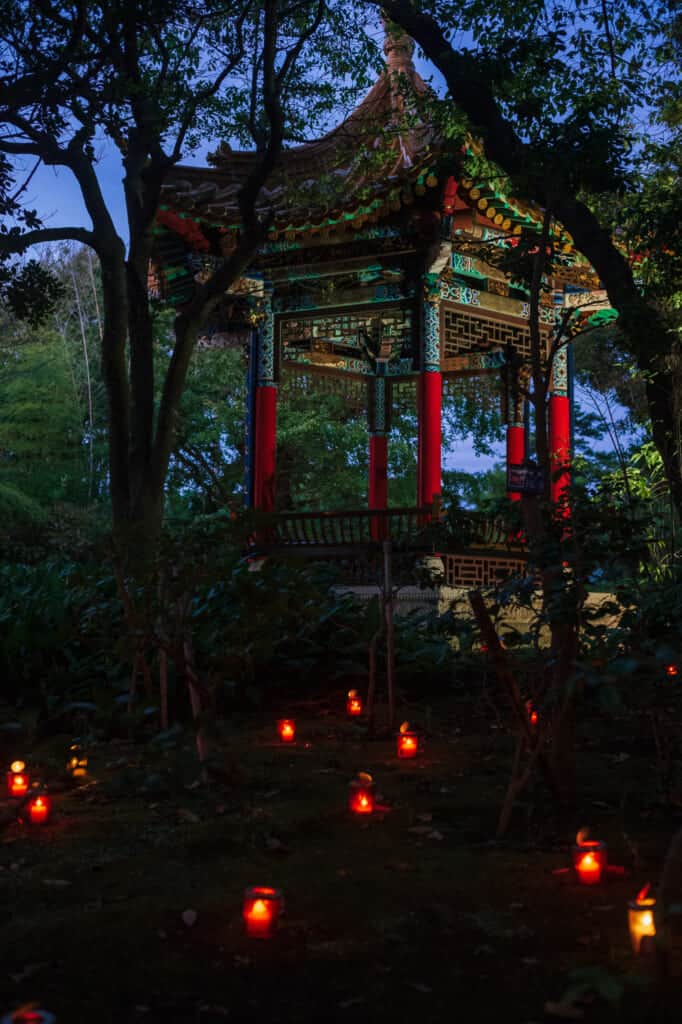
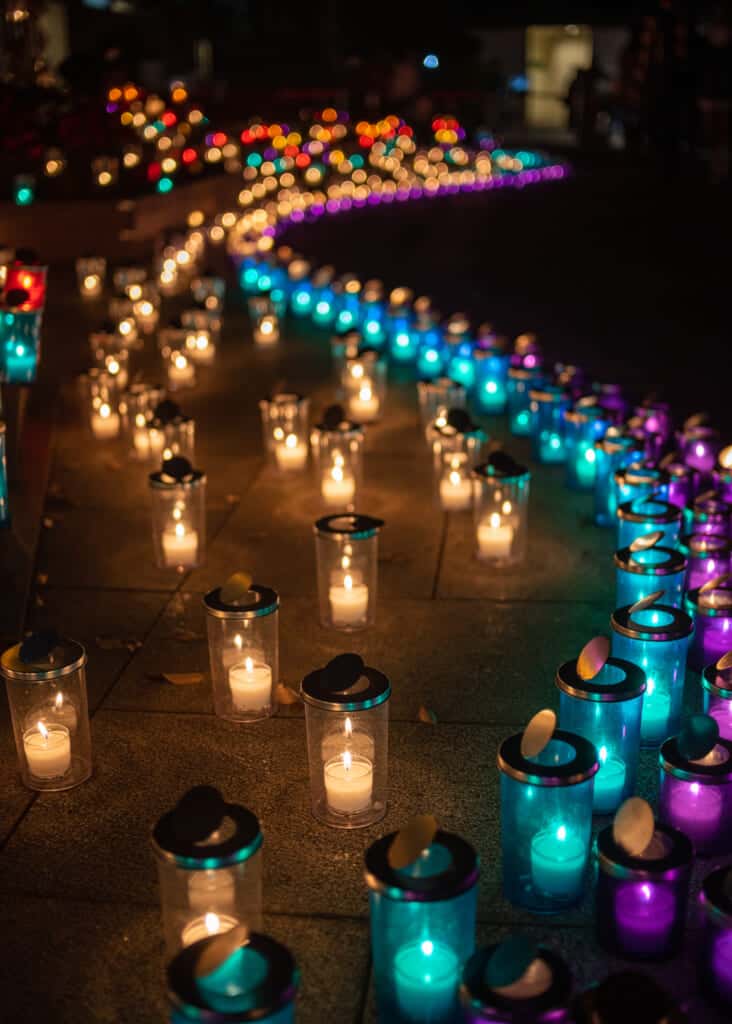
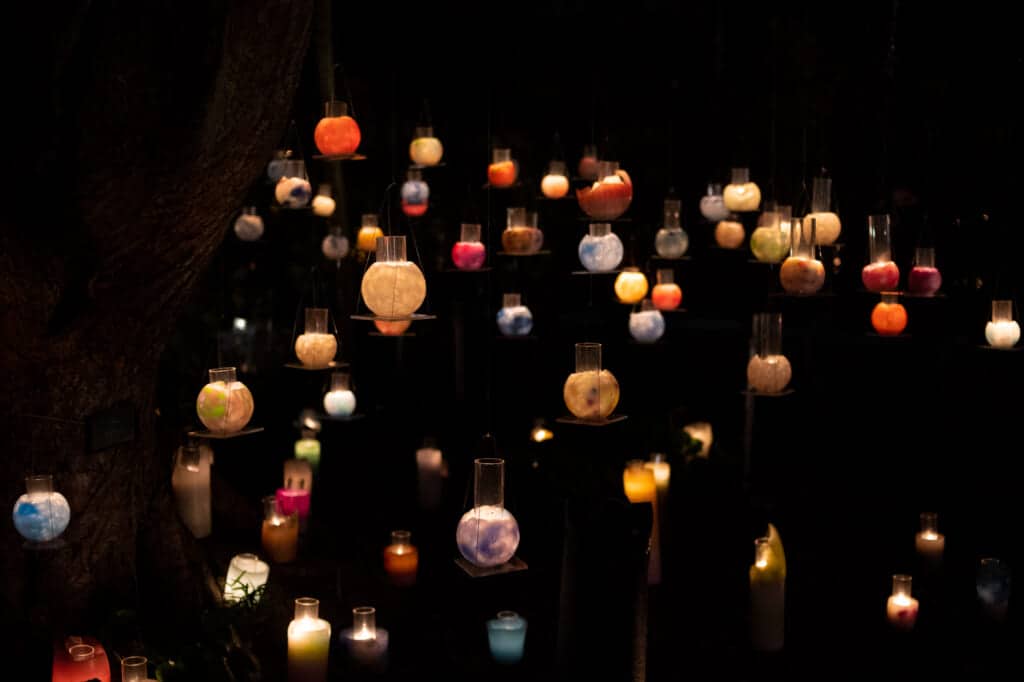
Enoshima Sea Candle
The last admission covered by your Enopass is the Sea Candle itself. Ascend the Candle, which stands at nearly 120m above sea level, for a fantastic panoramic view of the bay and surrounding Fujisawa City, punctuated by the thousands of tiny lights from the candles in the garden below.
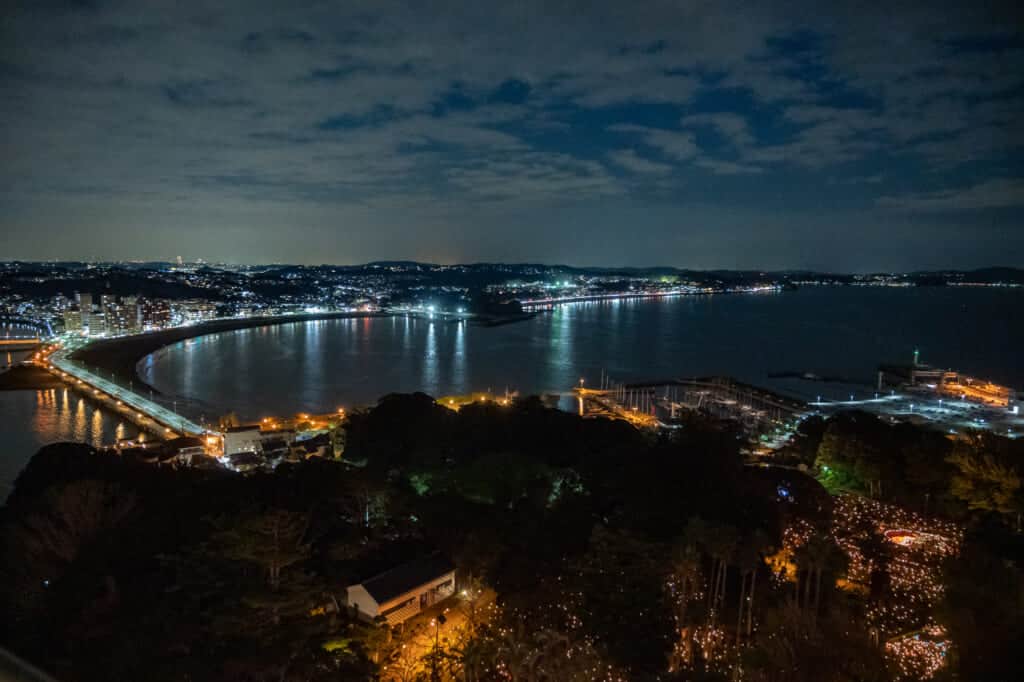
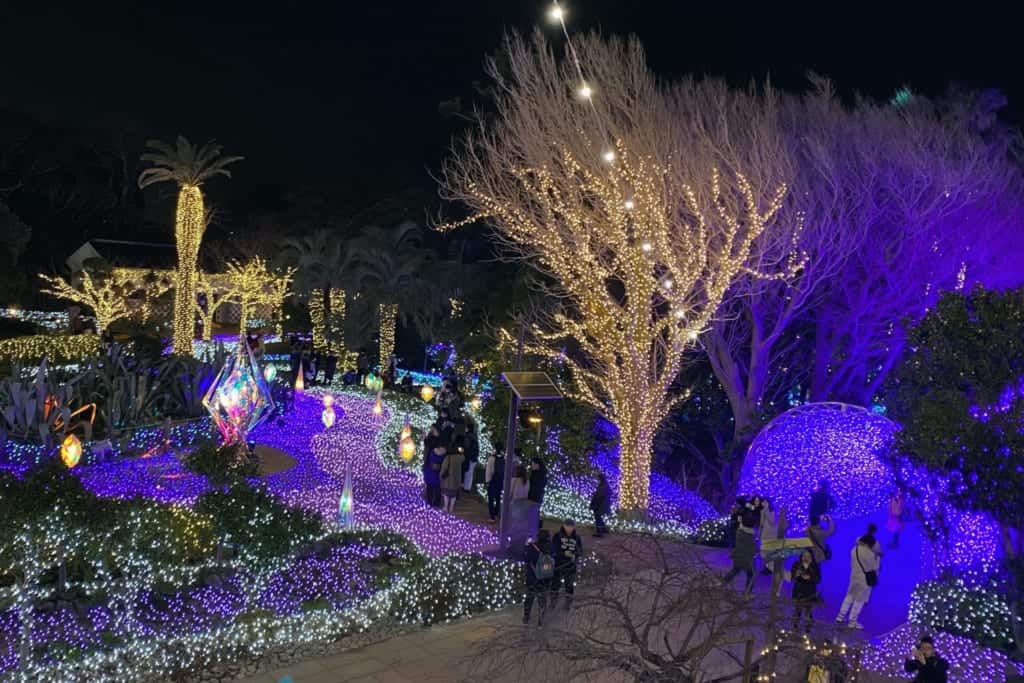
If you miss the Shonan Candle Festival, don’t fret. It is closely followed by the Jewel of Shonan winter illumination, which begins in late November through early March. The stunning illumination fills the garden and overflows into other areas of Enoshima island.
It might be challenging to pull yourself away from the festival. If you are staying at the Enoshima Hotel and intend to use the Enoshima Island Spa facilities, you’ll have to do so before they close at 8:30 pm, so head down the hill to your hotel, pick up your yukata, and get in a relaxing soak in the hot springs before bedtime. Your tired legs and feet will thank you for it.
Enoshima Hotel and Enoshima Island Spa
The Enoshima Hotel is the only hotel on Enoshima Island, though there have been ryokan accommodations on the island for centuries. As the nearby Enoshima Island Spa owns it, guests are given access privileges to the hot springs baths and swimming pool at the spa during their stay. The hotel itself is a boutique-style, with just 15 standard rooms and two suites, with all rooms facing Sagami Bay.
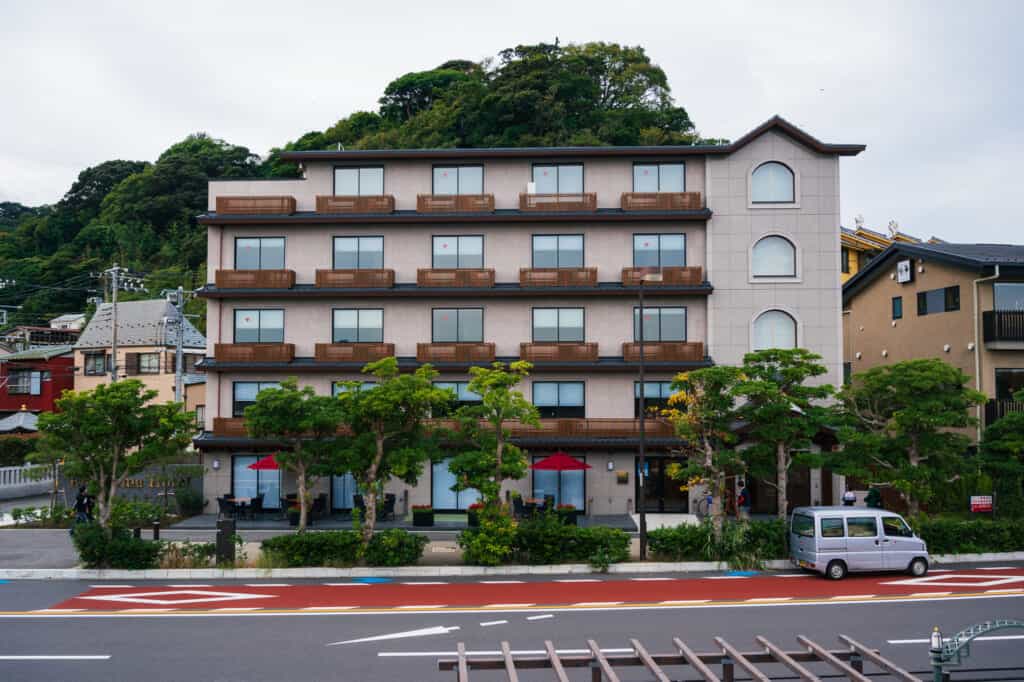
The standard room is luxurious in itself with plenty of amenities, including a large LCD television, mini-fridge, and Nespresso machine. Hotel staff will ask for your yukata size when you check-in so you can lounge in comfort or when you visit nearby Enoshima Island Spa. There are plenty of restaurants within a few minutes’ walk of the restaurant, and the Island Grill is located on the premises. Of course, don’t feel limited to what is nearby; Fujisawa Foodies is the gourmet guide for Fujisawa where you can find plenty of good eats in English.
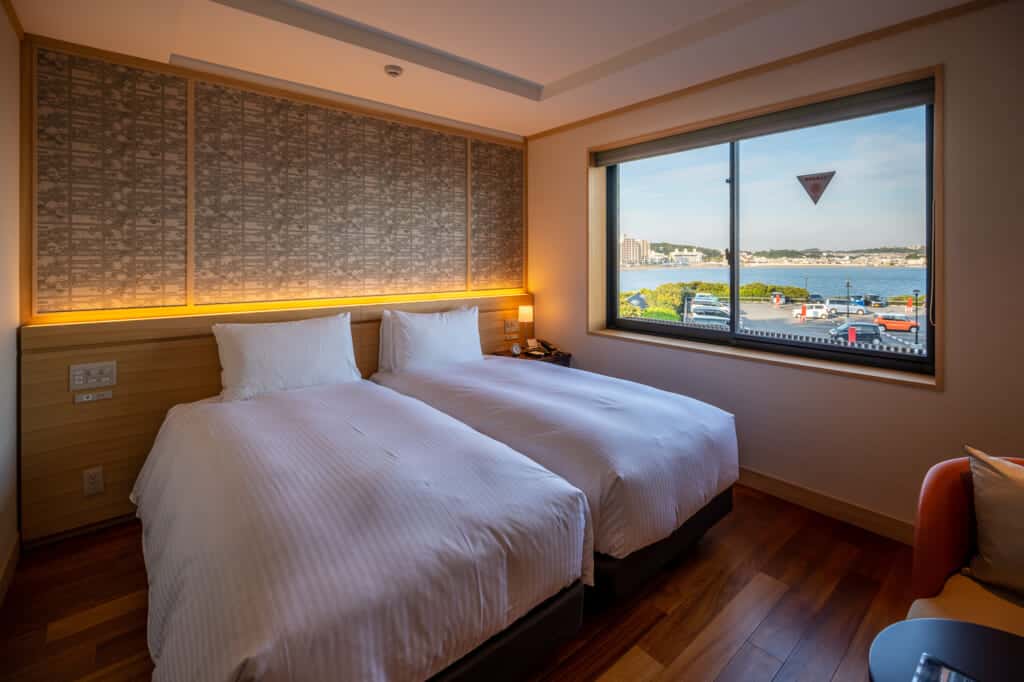

Day Two on Enoshima Island: A Morning Stroll, Shopping, and Enoshima Aquarium
You’ll probably turn in early during your stay on Enoshima. After all, there is no nightlife on the island after 9:00 pm, and the activities of the day, including a visit to the hot springs, will leave you ready for an early bedtime. Set your alarm for “early-o’clock” and rise with the sun, which was for me about 6:00 am.
Take an early morning stroll around Enoshima before the tourists arrive and while the locals are busy preparing for their day. Fishermen sit on the shores of the island patiently waiting for bites, while those who went out on their boats hours before are returning with their nightly catch. The warm glow of the morning sun spreads across the island, and although you woke up early, you begin to feel energized by the morning atmosphere of Enoshima.
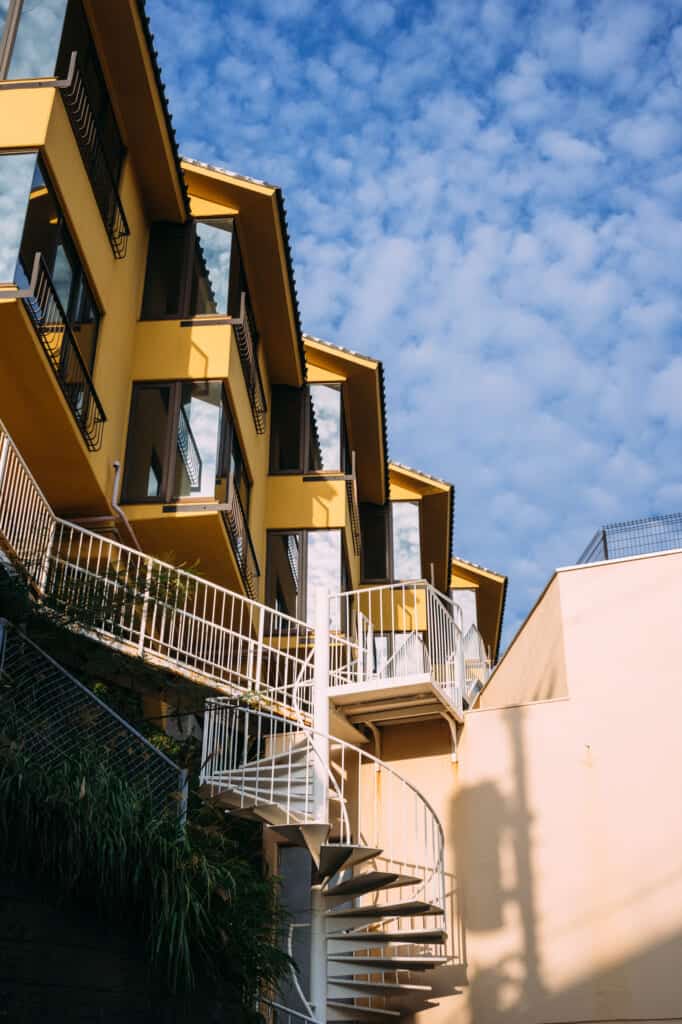
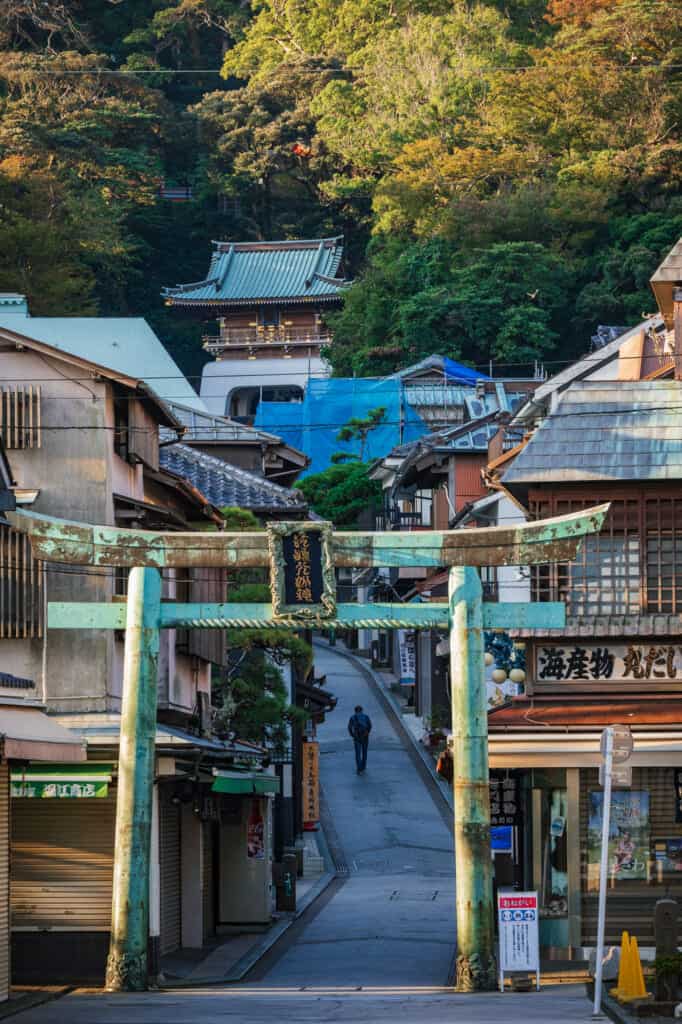
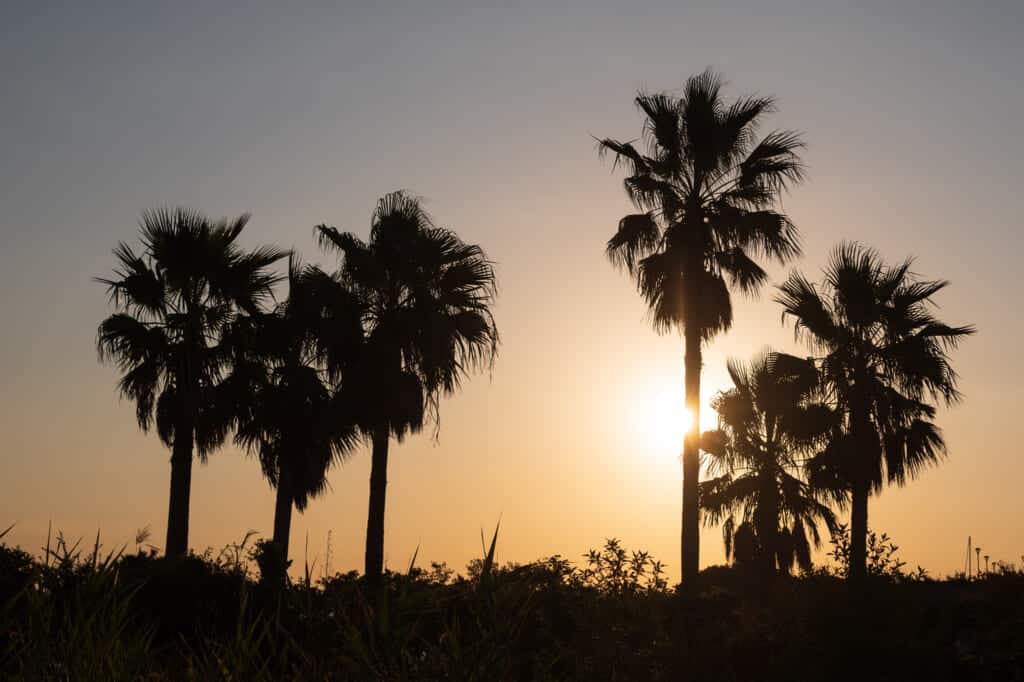
Old Neighborhood Higashi-machi
Higashi-machi is the neighborhood behind your hotel, which has been mostly unchanged for decades. It is a reminder that Enoshima is not just a tourist destination but a living community of people who have called the island home for generations. Stroll the quiet streets and find cute cafes, restaurants, and fishing shops among the local residences. Perhaps you’ll even make a new feline friend in one of the many cats that roam the streets of Enoshima.
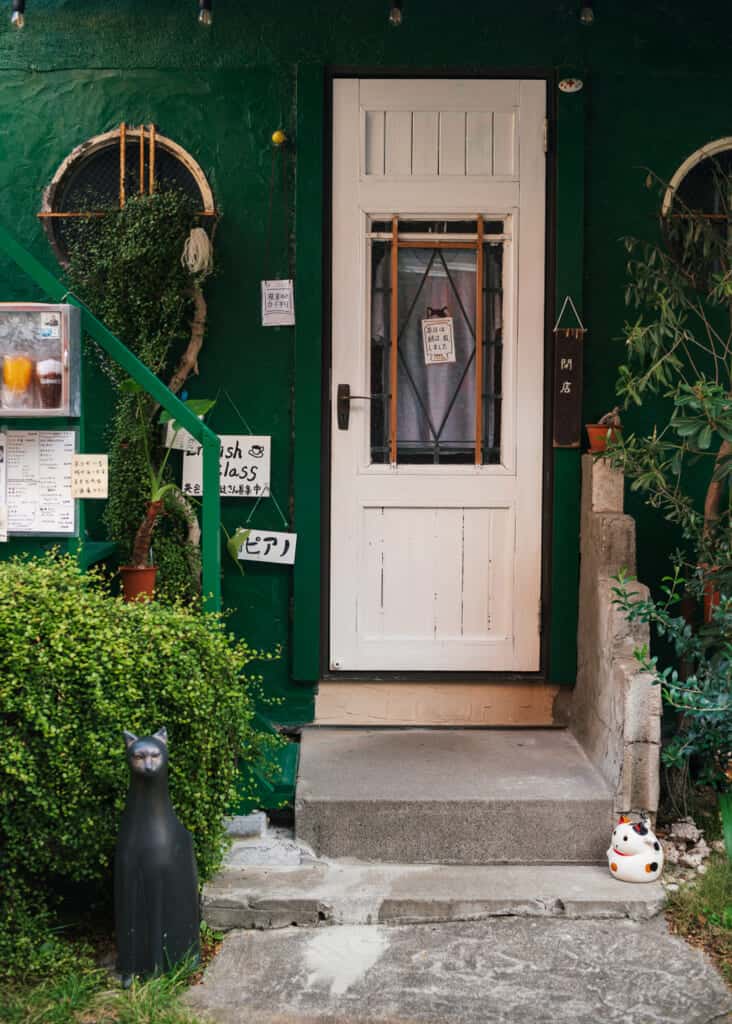
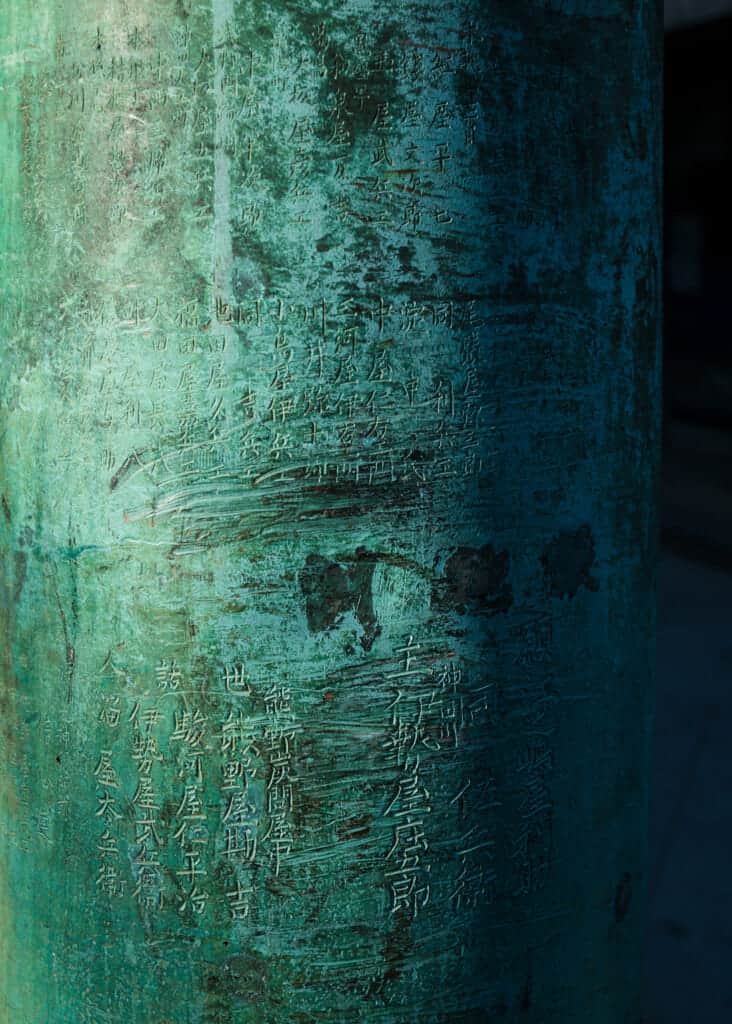
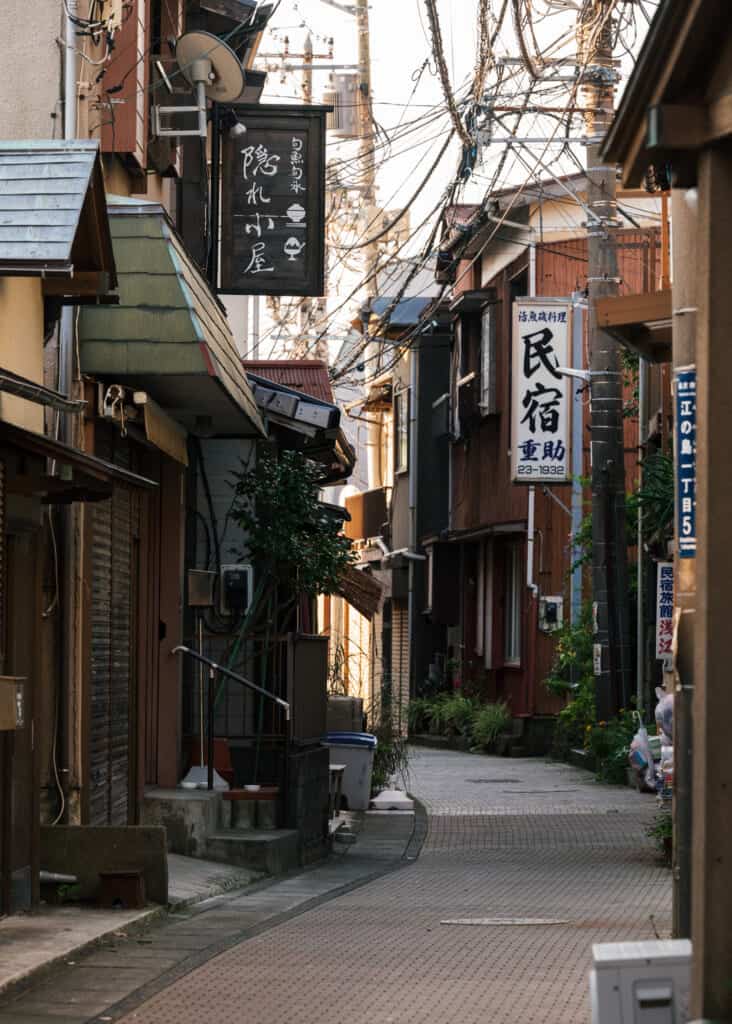
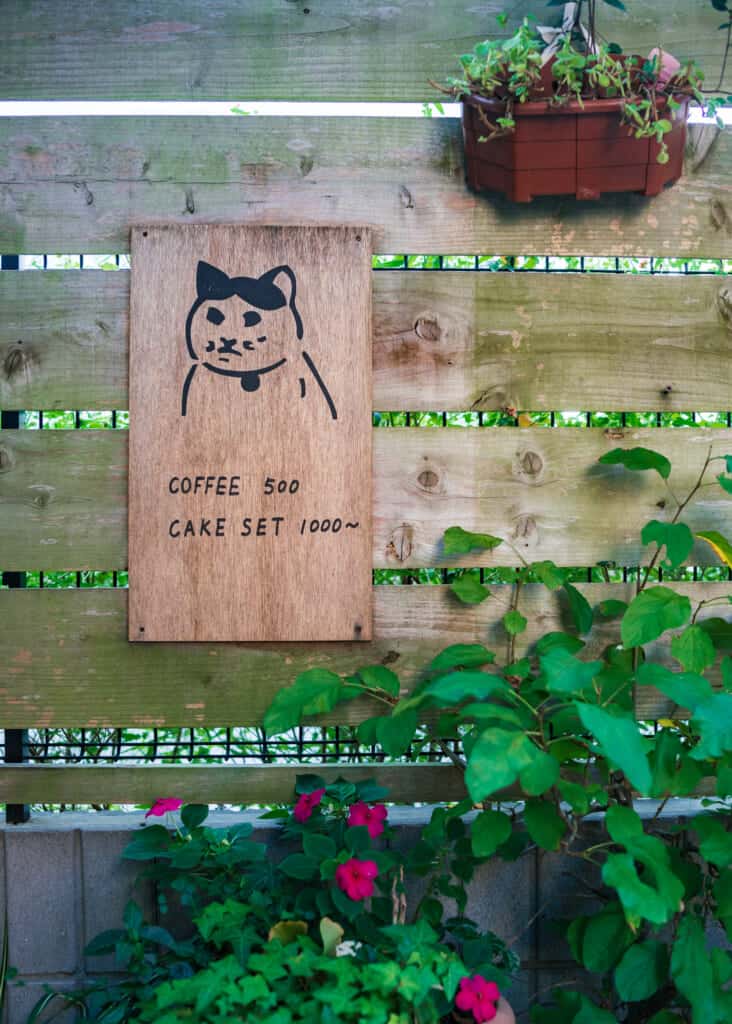
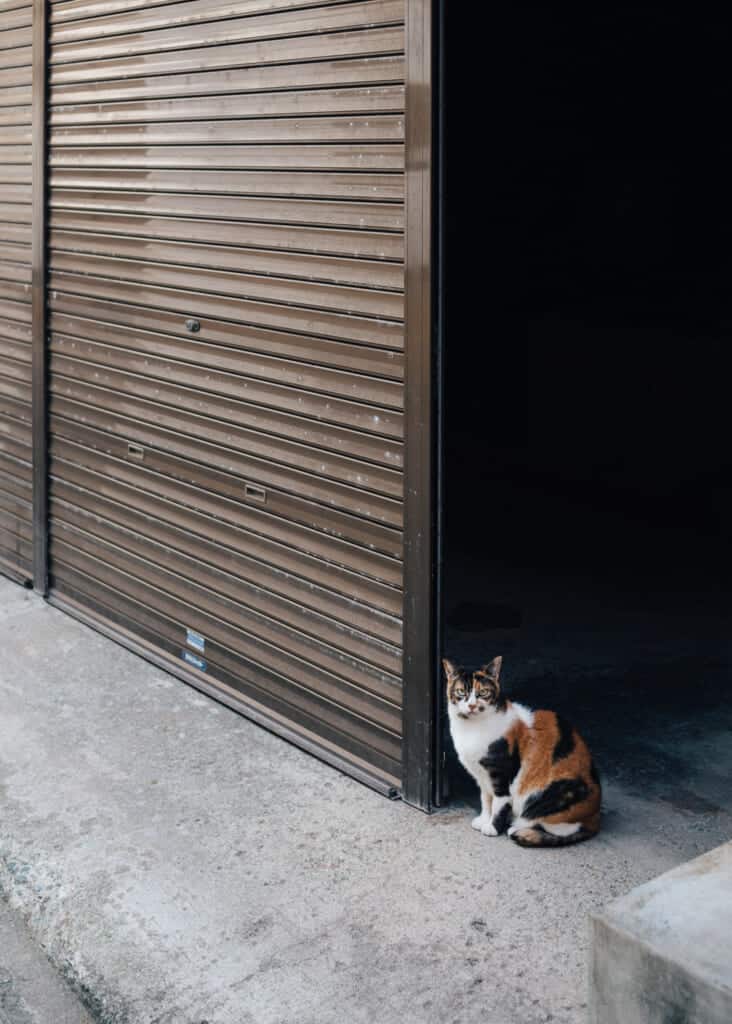
Walk back across the bridge to Enoshima-Katase West Beach, which has the best view of the island in the morning light. You might meet some local fishermen on the pier and take a quick peek into their buckets to see what they have caught that day.
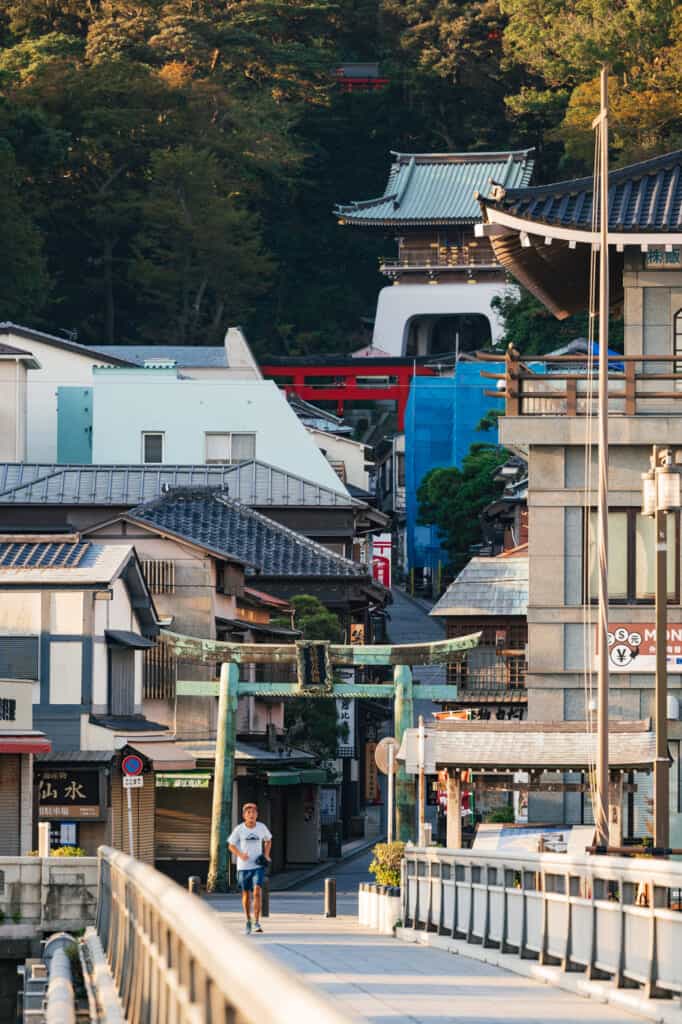
After a refreshing walk along the ocean, you can return to Enoshima Hotel, where the breakfast included with your room is served between 8:00 and 10:00 am. Choose between a Western-style and Japanese breakfast, complete with an all-you-can-drink selection of coffee, teas, and juices. Take your time checking out of the hotel after breakfast; you’ll have until 11:00 am to do so.
Hetsumiya, Hoanden and Yasaka Shrine
We haven’t visited one of the three Enoshima Shrines yet, so let’s check out that shrine today. Head straight up Nakamise Street under the red torii gate and up the steep flight of stairs under the large white Zuishinmon gate. At the top of the final flight of stairs, you’ll reach Hetsumiya, the first of the three Enoshima Shrines. Hetsumiya itself is composed of three separate pavilions, each dedicated to a different sea goddess.
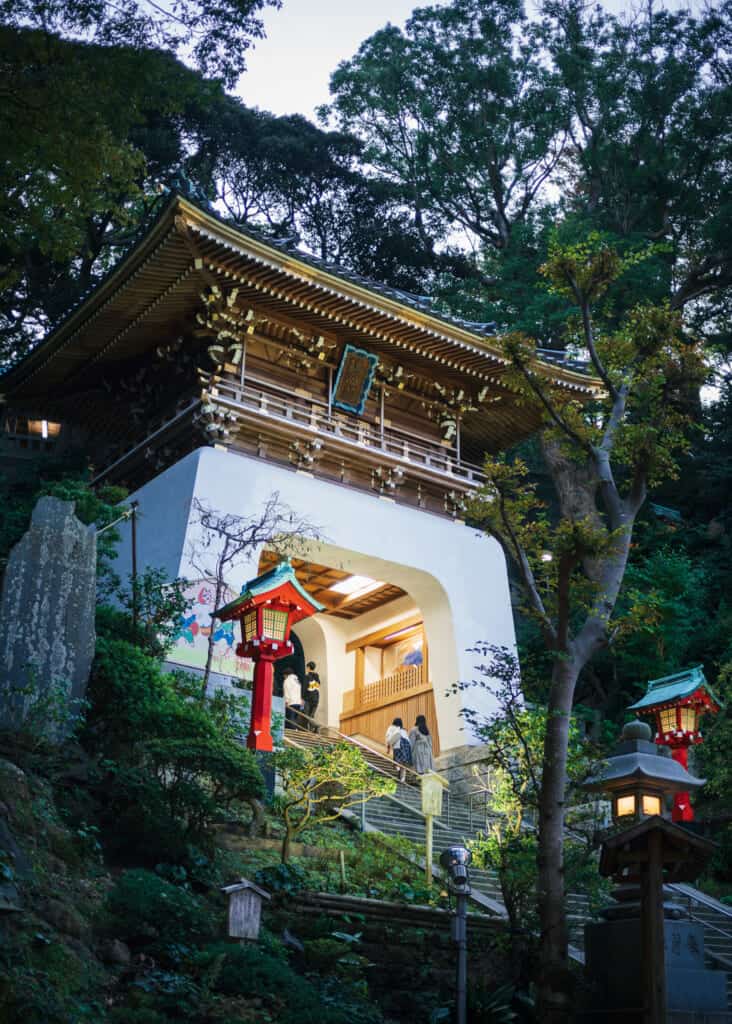
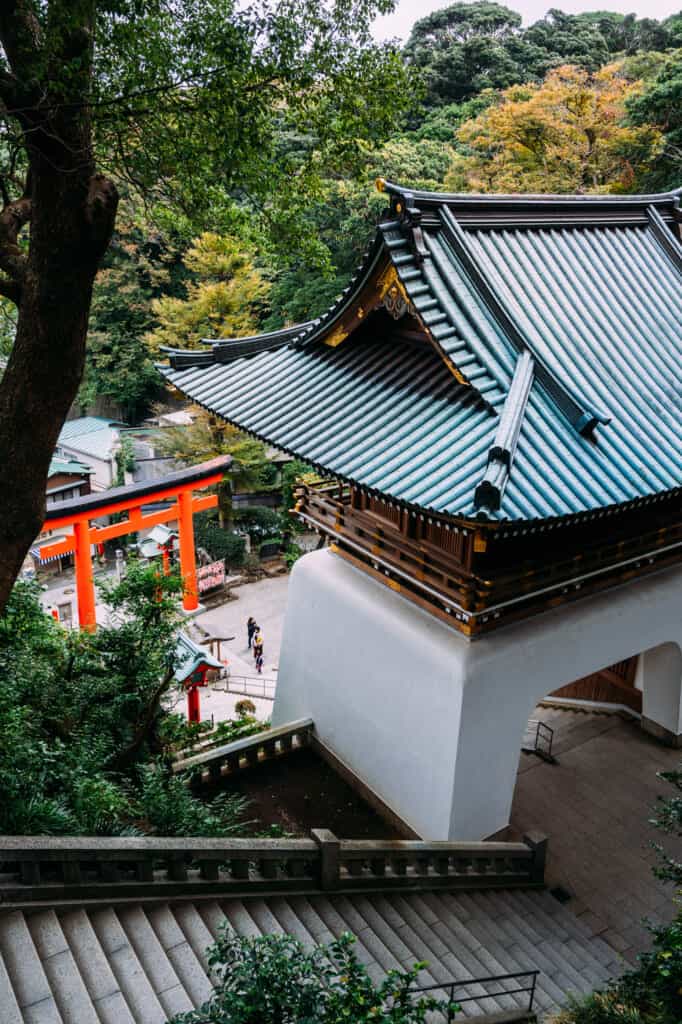
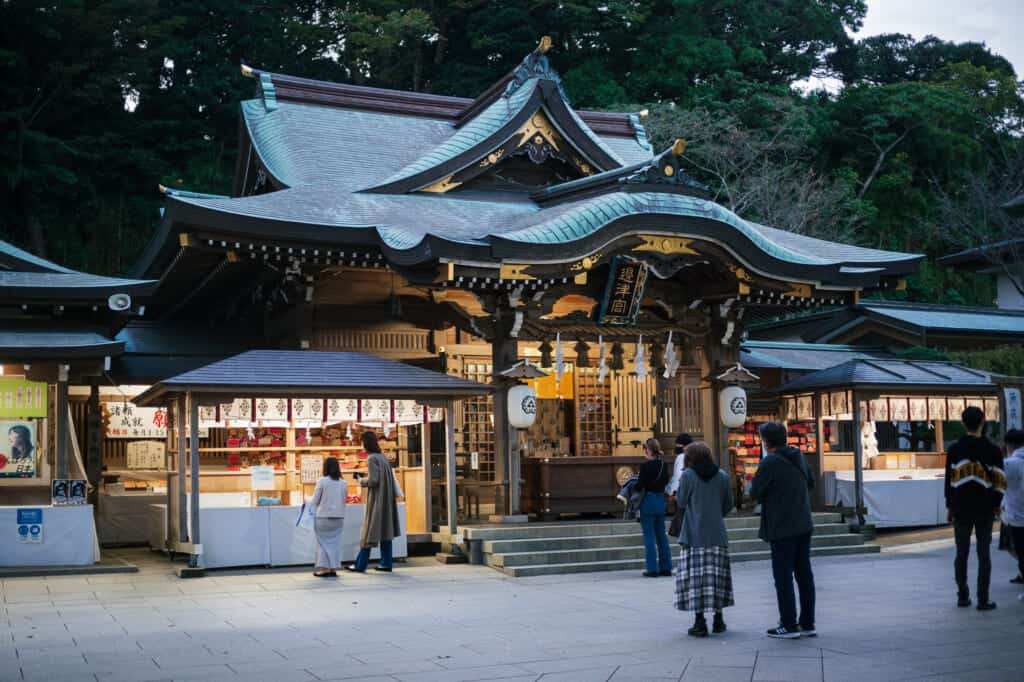
To the left of Hetsumiya is Hoanden, an octagonal shaped temple which contains an image of Benzaiten. Two forms of Benzaiten were worshipped here over the centuries — the eight-armed version for victory in battle during the Kamakura period and the two-armed version for art and music skills during the peaceful Edo period.
Finally, to the left of Hoanden is the small Yasaka Shrine. This unassuming shrine is connected to the vibrant Tennosai, a summer festival celebrated in and around Enoshima in mid-July, the largest of the Enoshima festivals. In front of Yasaka Shrine, collectors of shrine and temple stamps, goshuin, can obtain all varieties of stamps from the various shrines and temples around the island.
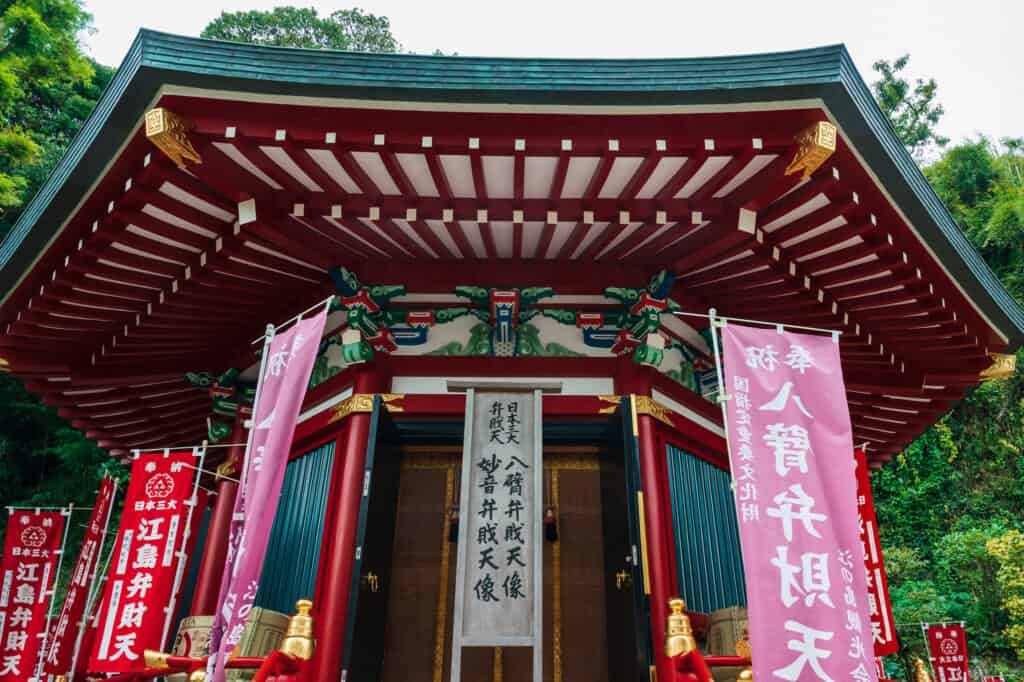
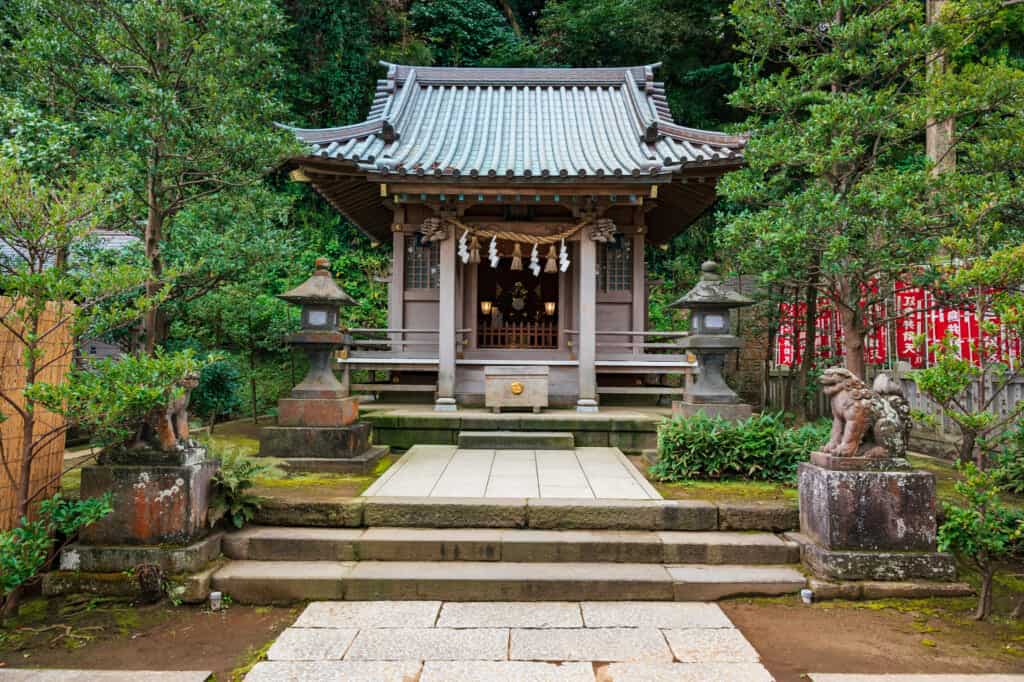
Shopping on Benzaiten Nakamise Street
If you didn’t have enough time to shop for souvenirs along Nakamise Street yet, now is your chance to do so. A small crowd gathers outside of Asahi Honten, a shop where they make enormous senbei (Japanese crackers) with octopus or shrimp pressed into them before your eyes.
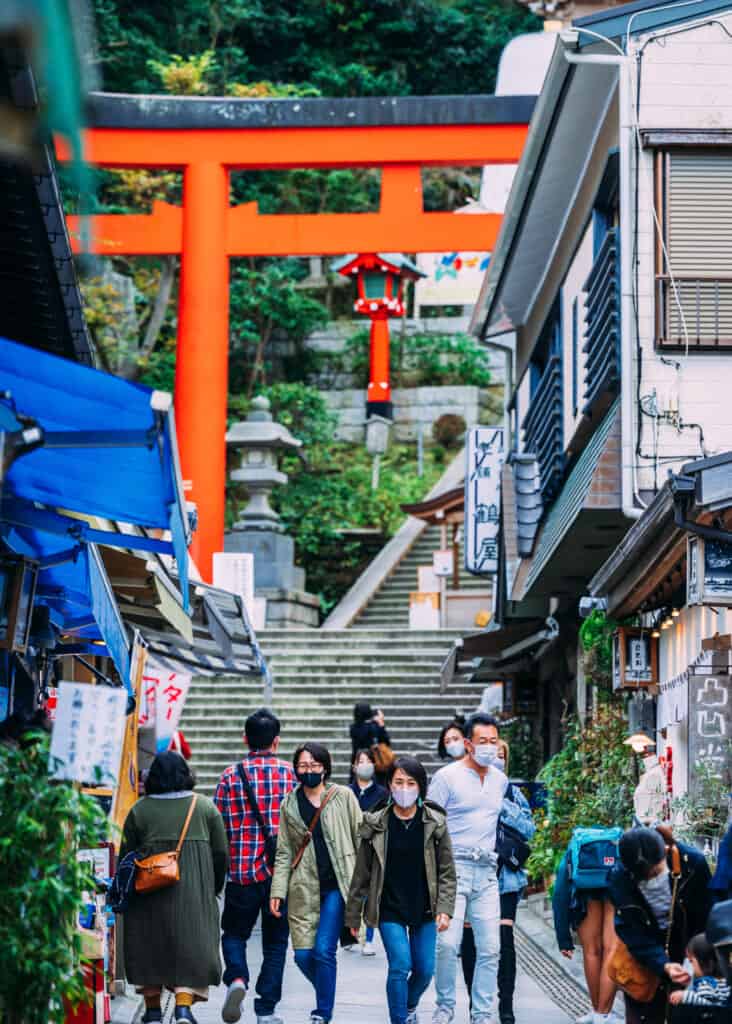
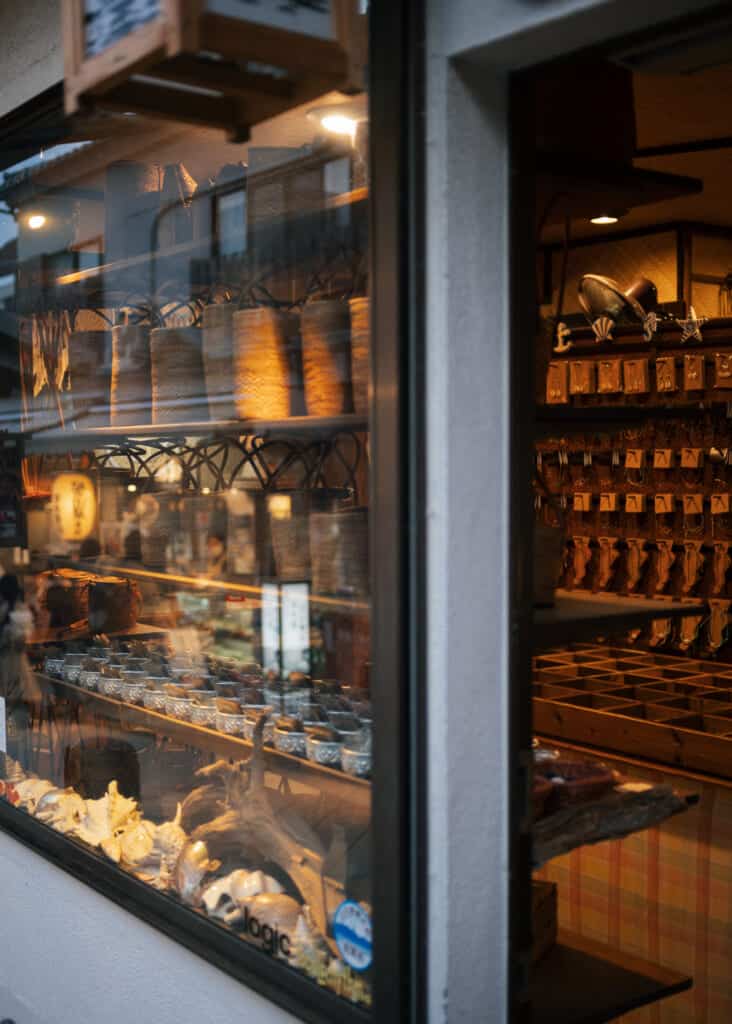
Halfway down Nakamise Street in a small alley opposite the Iwamotoro Ryokan, you will find the onigiri shop Harumi tucked away. Onigiri are one of Japan’s most popular portable foods, often obtained from the refrigerated sections of a conbini (convenience store), but not at this level of quality. As Bob Marley and the Wailers played on a little stereo outside the shop, I ordered two pieces: a tuna-mayo and grilled mackerel onigiri to go. You can choose to eat in the shop or take your little bundles of umami pleasure elsewhere to enjoy at your leisure.
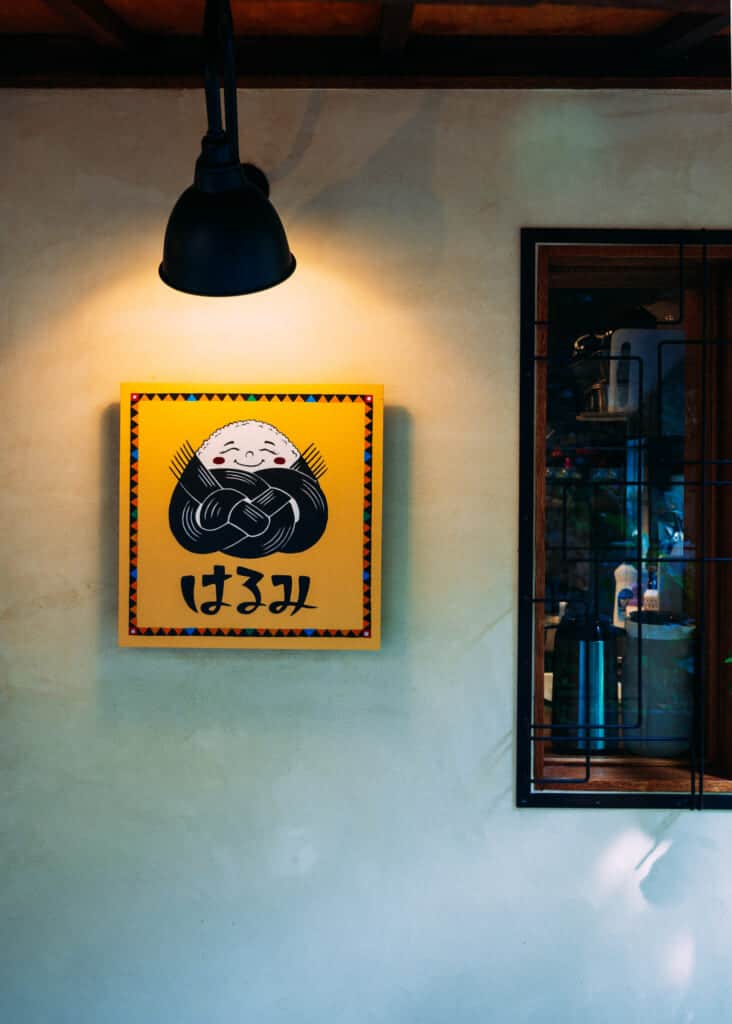
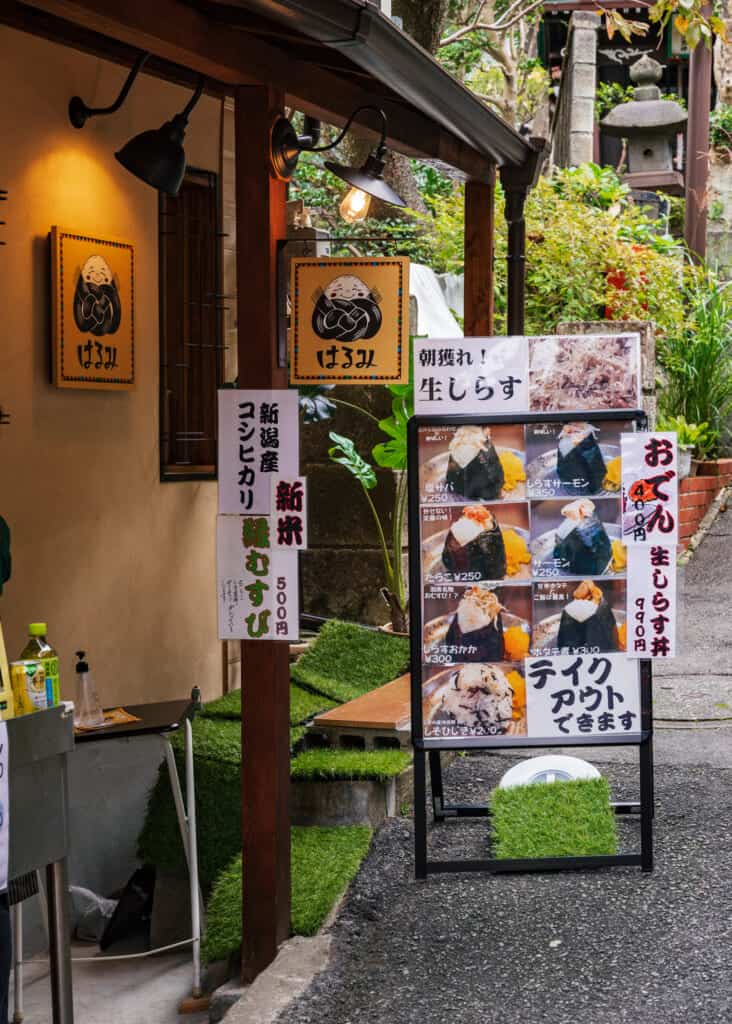
I took my onigiri to eat outside my last destination of the day, the Enoshima Aquarium. However, in my haste, I squished them beyond recognition before I could take a photo of them. Their unfortunate shape did not affect their flavor, and I enjoyed every bite.
Enoshima Aquarium
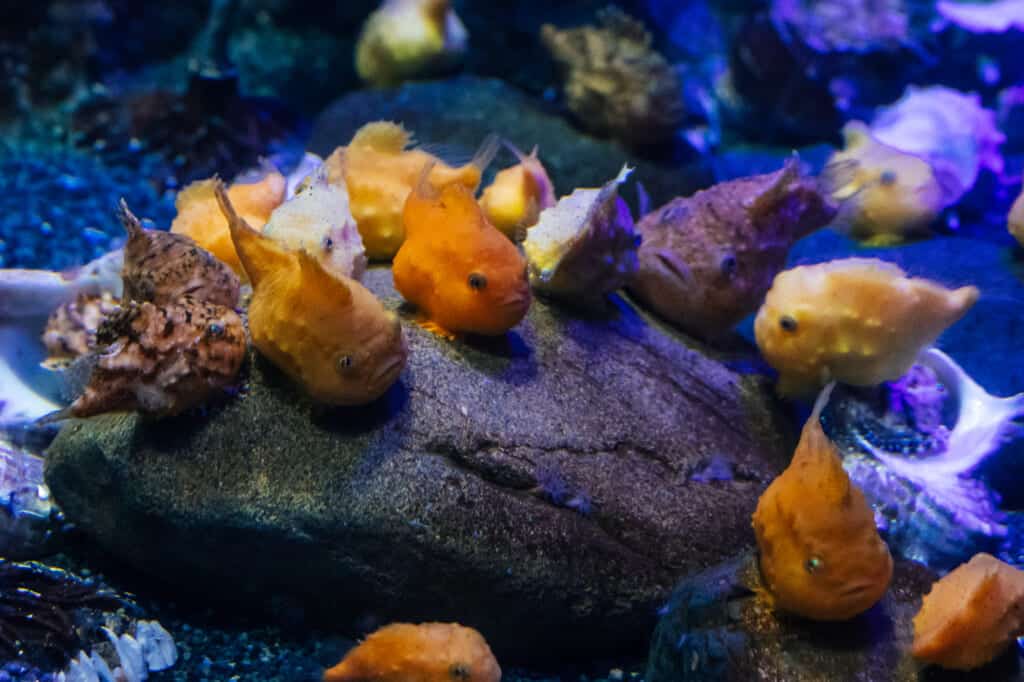
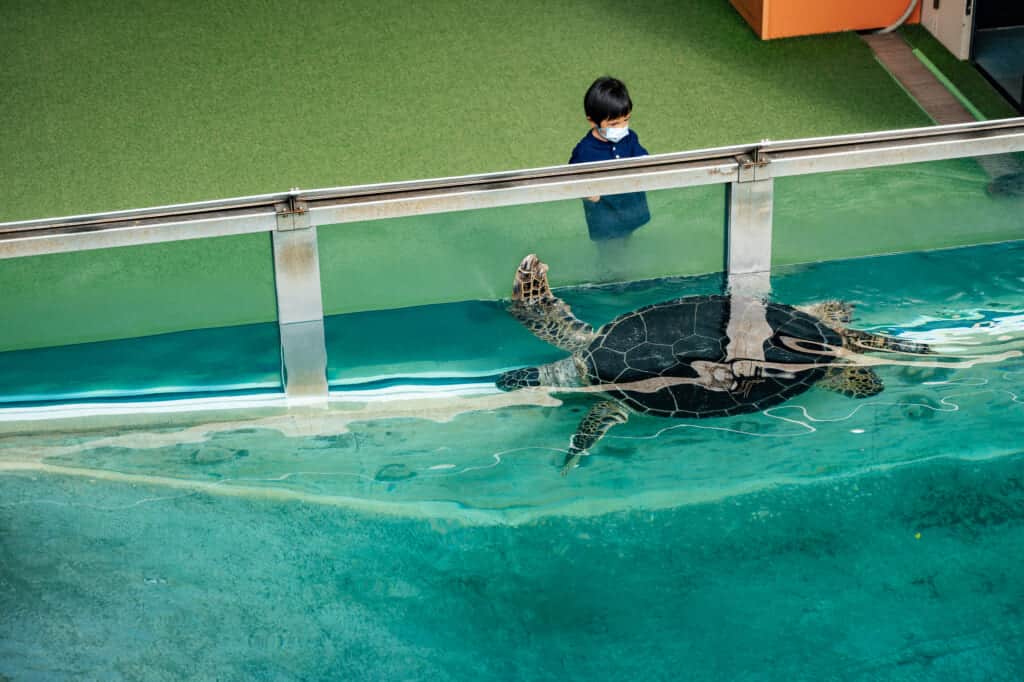
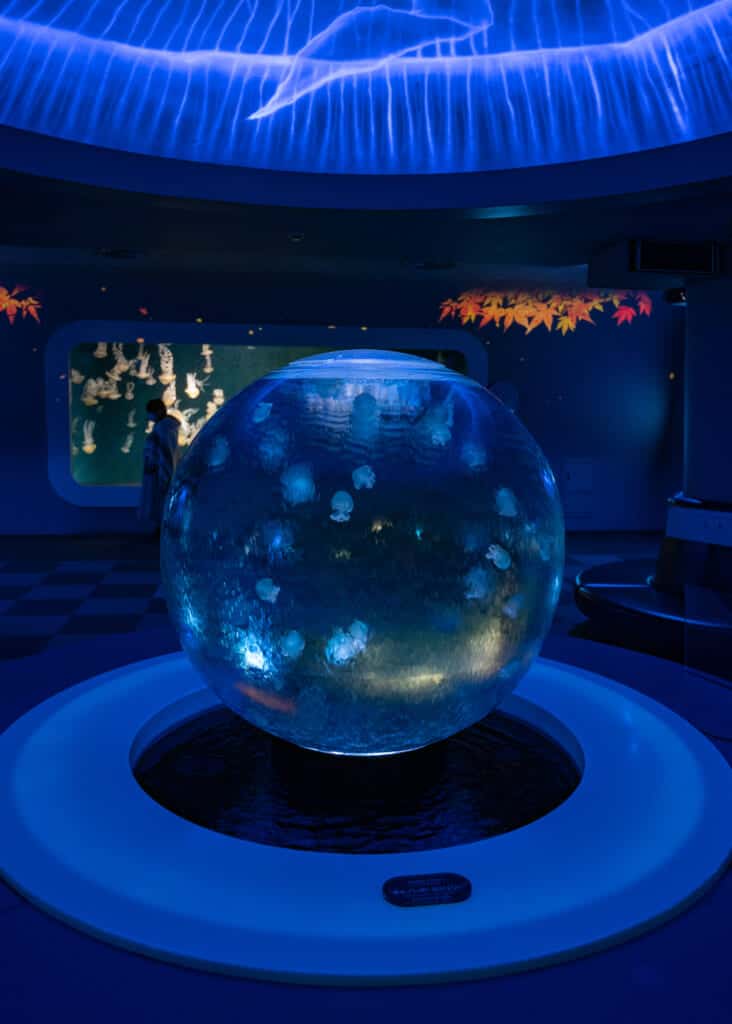
The Enoshima Aquarium has drawn crowds to Enoshima since 1954, built as the first modern aquarium in Japan. The aquarium houses hundreds of local sea life varieties, benefiting from the diversity of the Sagami Bay ecosystem. It is a significant contributor to the research of sea life in the area. Plan to spend 2 to 3 hours browsing the exhibits and seeing the shows and special events.
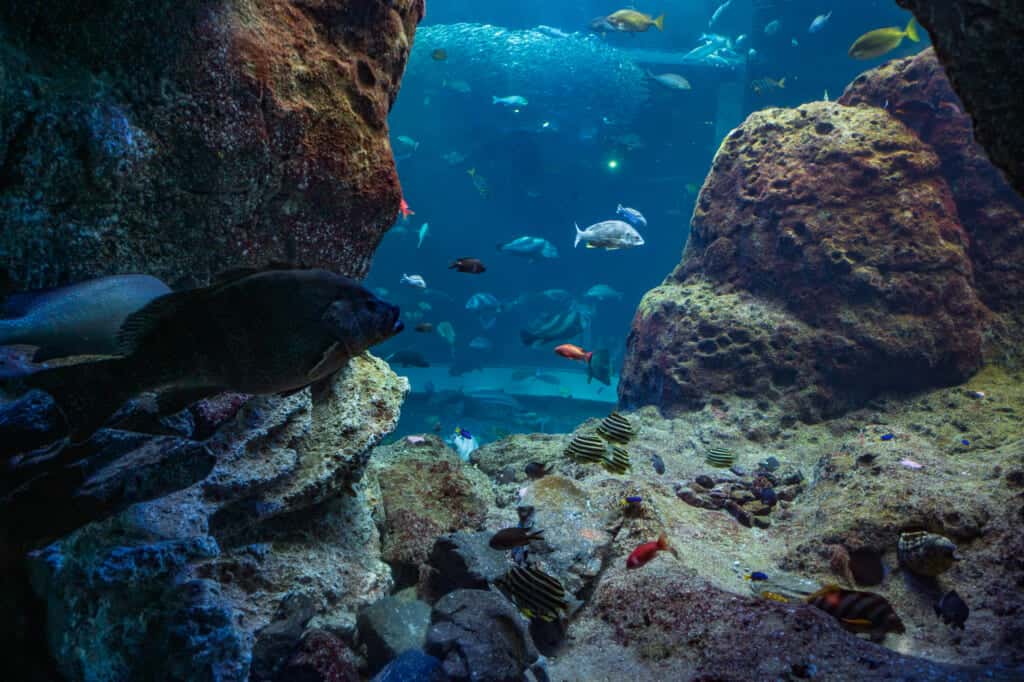
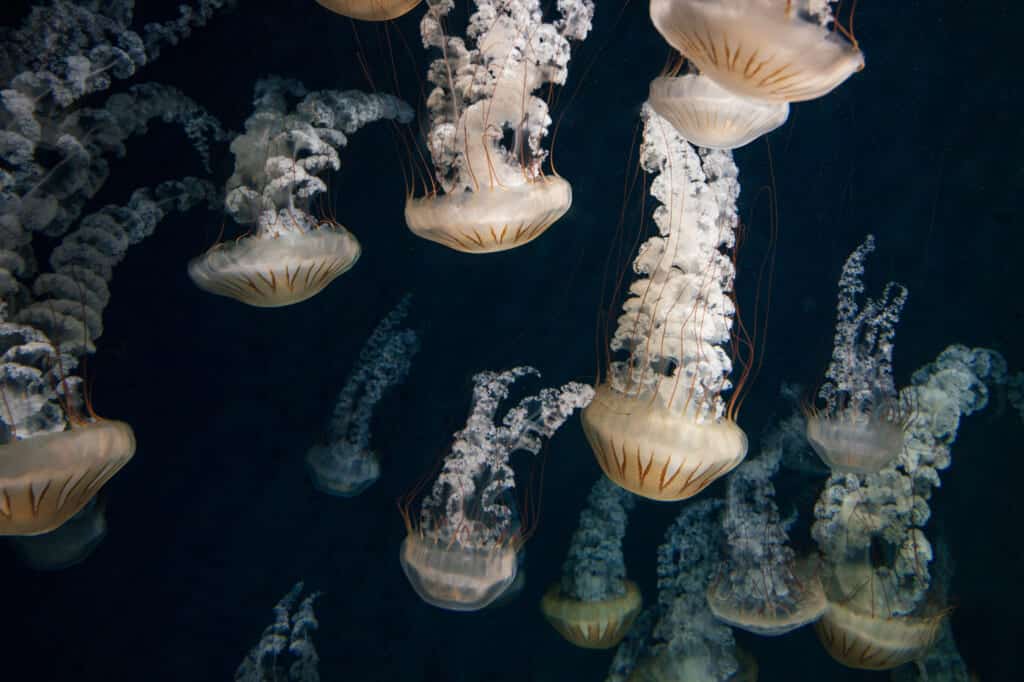
When I emerged from the aquarium later in the afternoon, I was treated to an unexpected surprise. Mt. Fuji made an appearance across the bay in a veil of clouds. It was the perfect way to cap off a refreshing two-day break.

Getting To Enoshima
There are three train lines you can take to reach Enoshima, each with their own personality. The cute Enoden electric line is a good option for those who want to spend an extra day exploring nearby Kamakura. You can get to Enoshima on the Enoden by transferring to it at either Fujisawa or Kamakura stations.
Odakyu Romance Car to Enoshima
The fast and luxurious train is the Odakyu Romance Car, a special express train that whisks you between Shinjuku and Katase-Enoshima stations in a little over an hour. Katase-Enoshima is also the closest Enoshima station to the island and was recently renovated in a bold and slightly ostentatious style. All seats are reserved, so purchase your reserved seat ticket in advance during peak days and seasons or at the station if you are traveling off-peak, like midweek.
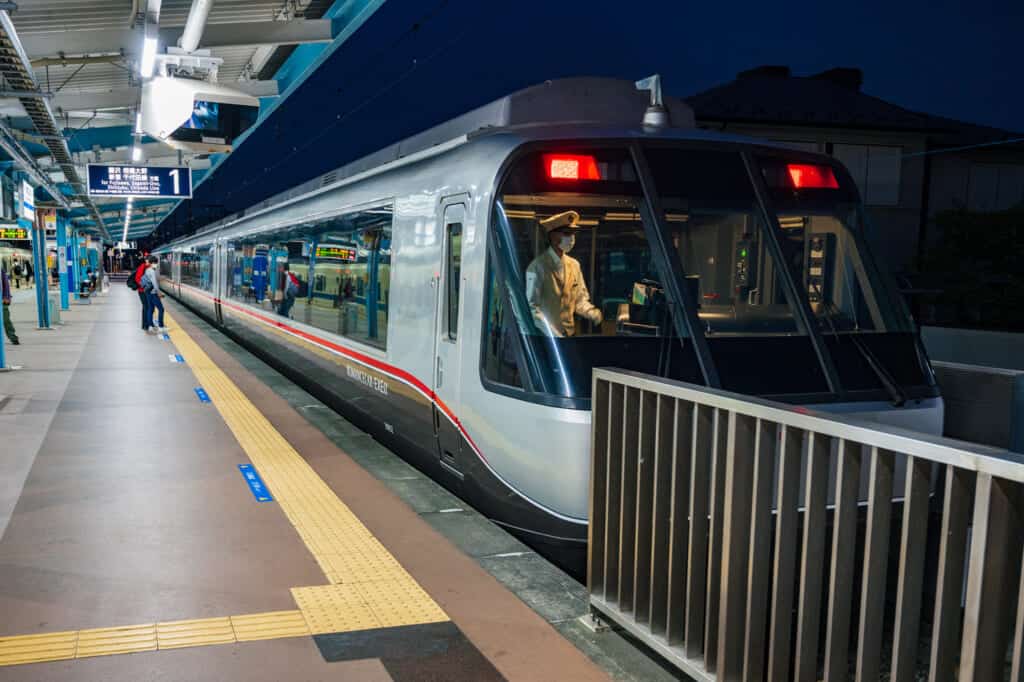
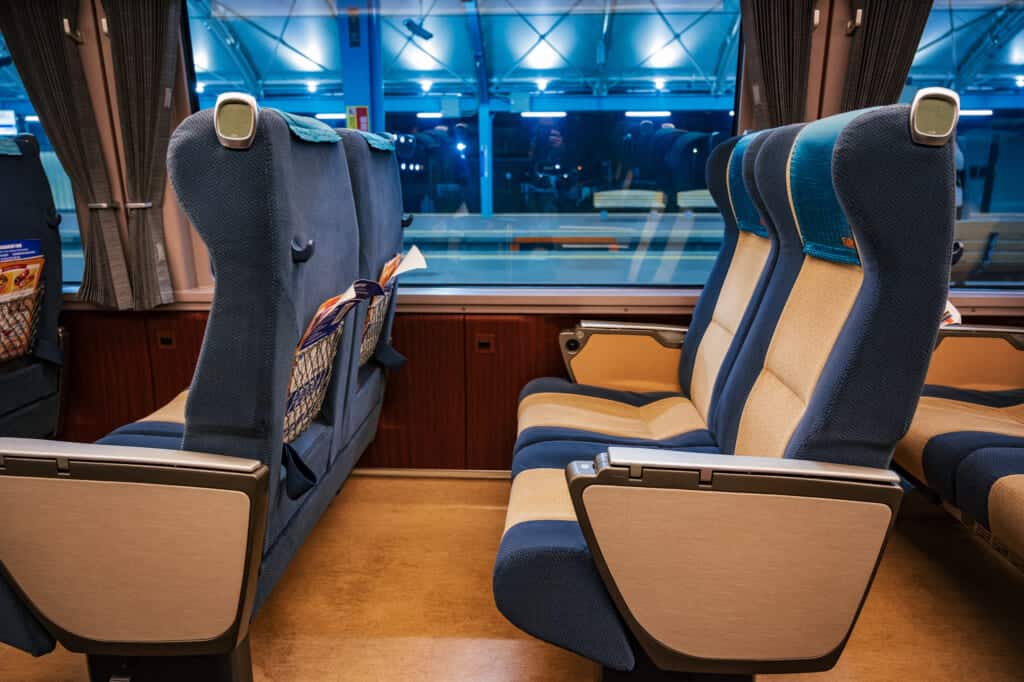
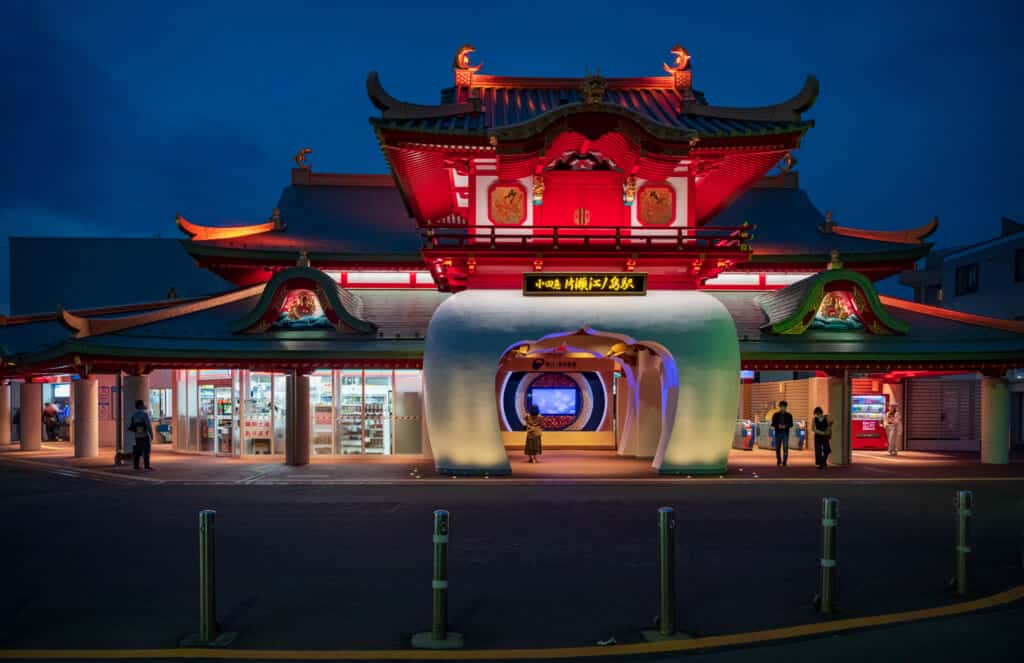
Shonan Monorail to Enoshima
The quirky and fun option would have to be the Shonan Monorail, which connects to Enoshima from Ofuna Station. The rail is above the train, so the cars are suspended from the rail, often above the busy streets. The train can feel a little jerky at times and might remind you more of an amusement park ride than a mode of transportation, but for the experience of flying in a train, this is your best option.
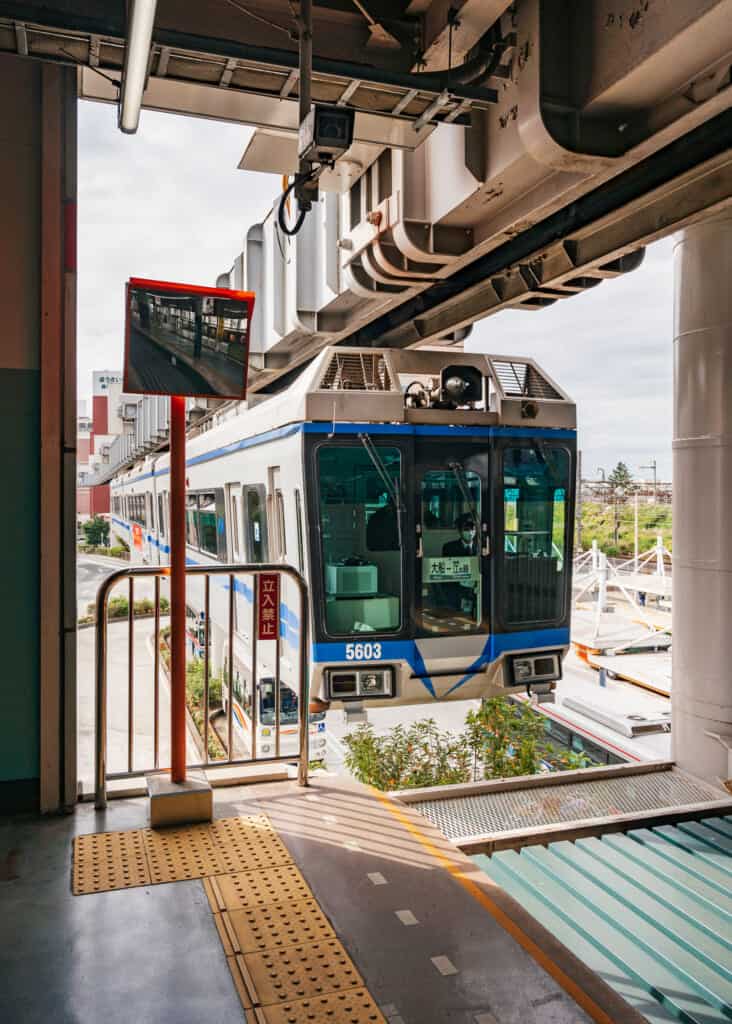
No matter how you chose to get to Enoshima, once there, you’ll realize your escape from the craziness of life is not far from where you live. In just two days, you’ll find a peaceful retreat along the coast that you can return to whenever you need to get away.
Please visit Discover Fujisawa to learn more about how to enjoy Enoshima and Fujisawa city.
Article sponsored by Fujisawa City Tourist Association.


